❧ Why AI Is Transforming Coding in 2025
Picture this: You're debugging a complex React application at 2 AM. The error makes absolutely no sense.
Five years ago? You'd fire up Stack Overflow, dig through documentation, and maybe—if you were lucky—find an answer in 30 minutes.
Today? You paste the error into ChatGPT, describe your setup, and get a detailed explanation with three potential fixes in under 60 seconds. 💡
Tools like Claude Code can even connect to your code, find the error, and fix it across many files. It runs tests and makes a pull request for you, all while you get some sleep. 🤝🏻
Come morning? You wake up to a fresh PR waiting in GitHub.
We've crossed into a new era of software development. 🚀
❧ The Pace of Change Has Grown Beyond Recognition
Remember waiting for Java 8's release in 2014? We spent months anticipating lambda expressions and stream APIs. The entire ecosystem moved in predictable, yearly cycles.
New framework versions arrived like clockwork. Documentation updates followed months later.
Here's what's different now:
Fast-forward to 2025, and everything changes within quarters, not years. The AI coding landscape transforms weekly.
Cursor jumped from a $400 million valuation to nearly $10 billion in just 16 months—that's a VS Code fork becoming a decacorn faster than most startups reach Series A.
Now we have AI agents that write entire features. AI tools that review code like senior developers. Platforms that turn natural language into production-ready applications.
By September 2025, a developer who doesn't use AI to speed up their work might as well be living under a rock... Or they simply don't exist anymore.
❧ 2025: The New Era of AI-First Development
Something shifted in 2025. We crossed from "AI as a helpful tool" to "AI as development infrastructure."
Here's what that looks like:
Major tech companies now ship features built entirely with AI help. Startups launch MVPs using AI coding tools for 80% of their codebase.
Enterprise development teams integrate AI code assistants into their CI/CD pipelines. What was experimental in 2023 became standard practice in 2025.
The numbers tell the story:
GitHub reports that over 50% of code in new repositories now has AI help. Stack Overflow traffic dropped 35% as developers turn to AI for immediate answers. Programming bootcamps redesigned curricula around AI-assisted development. 📈
We've moved beyond basic autocomplete. AI can now understand a whole project. It can build complex features on its own instead of just suggesting the next line of code.
❧ Projects Delivered with 100% AI Support
Today's most innovative projects leverage AI across every stage of delivery.
-
Planning
This stage starts before a single line of code exists. AI tools can analyze what's needed and suggest ways to do it. They also check user stories and find problems that a person might miss.
-
Development
Projects generate initial implementations in seconds. Advanced assistants refactor existing code, optimize performance, and ensure compliance with coding standards.
-
Testing
AI tools make full test suites on their own. They find problems a human might miss. They also run tests to check how code works in different situations. 🧪
-
Documentation
AI tools now write docs like APIs and guides for you. No need to do it by hand—they update automatically when your code changes.
-
Deployment
AI helps systems plan and carry out deployments. It can guess what problems might come up and even fix them on its own if something goes wrong.
The result? Teams can deliver projects faster, with better code quality. They can focus on solving creative problems instead of doing the same tasks over and over. 🎉
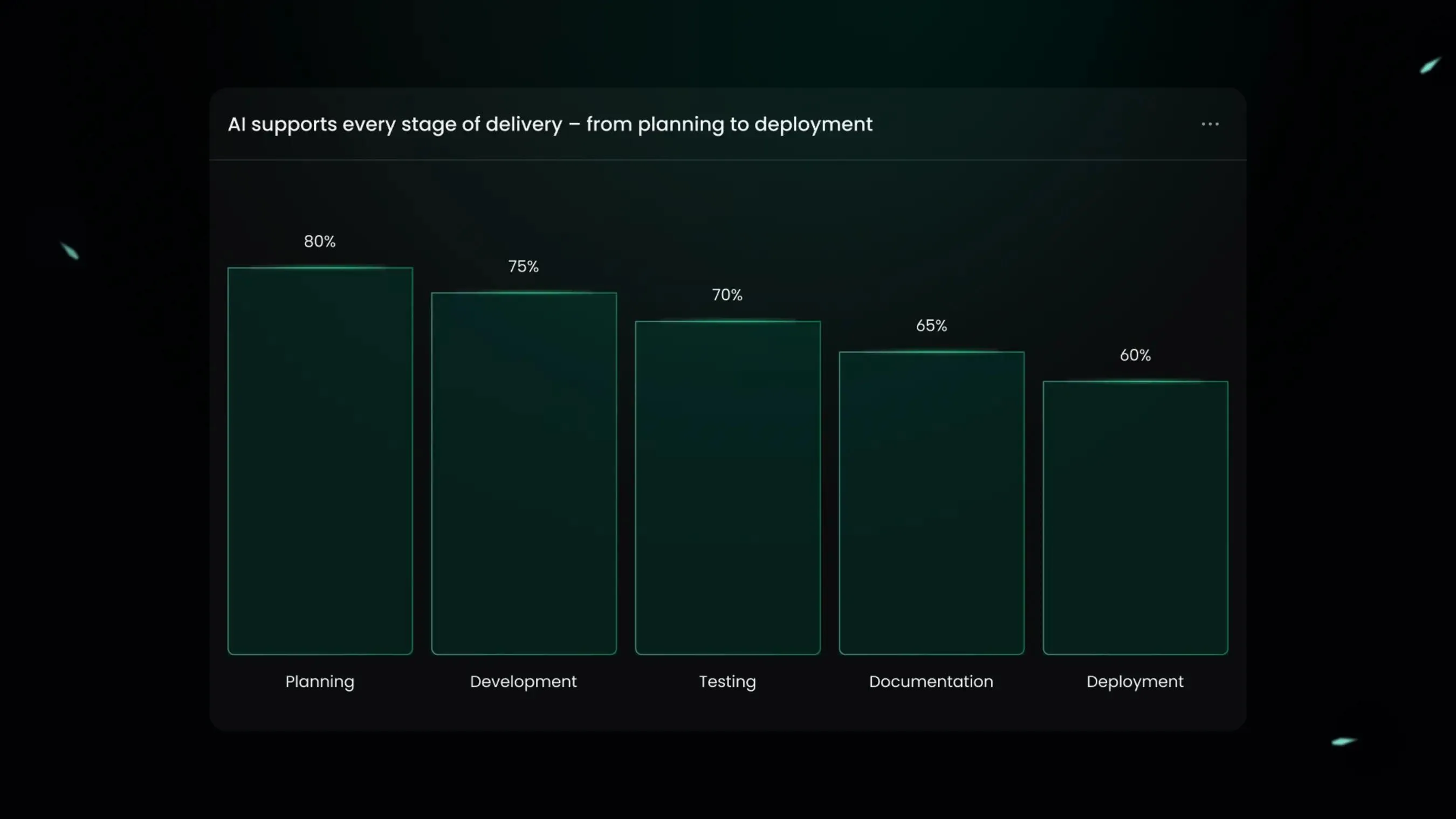
❧ How to Use This Guide
Before we dive into the deep end of AI dev tools, let’s get you oriented. Whether you’re debugging your first app or leading a team of senior engineers, this guide is built to serve you. 🤝🏻
Call it your AI coding toolkit compass—a quick map to what’s out there, what’s worth trying, and what might surprise you. 🧭
This guide is structured for clarity:
- Tools are grouped by how developers actually use them, not by hype cycles or vague categories.
- Each entry shows what the tool does best, where it falls short, and how it fits into real-world workflows.
- Both dominant platforms and under-the-radar tools are included. Some of the most exciting ones in 2025 aren't mainstream - yet. 🎯
- There's a pricing breakdown too. AI coding tools often start free—but the real power usually hides behind a paywall. 💸

❧ AI Conversational Apps
Before there were AI IDEs or command-line copilots, developers started here. Just you, a chat box, and some hope.
At first, it felt like magic. Ask a question, get a code snippet. Tools like ChatGPT or Claude could fix bugs. They could explain concepts. Sometimes, they could even one-shot full components. But here’s the truth: this isn’t how real coding happens anymore. 🛑
Still using a chat app to build full features? You’re walking barefoot through a construction site. It’s clunky, chaotic, and far from industry practice in 2025.
That said, don’t count them out. Need to convert a PDF to JSON? Summarize a README? Explore design theory or research patterns? That’s where they shine. 💬
❧ ChatGPT

Let’s be honest: this is where it all started for most people.
ChatGPT differs from usual product drops. It was the moment AI went mainstream. Built by OpenAI, it launched in 2022 and quickly became the fastest-growing app ever. AI was suddenly in your browser, ready to help.
OpenAI launched in 2015, founded by Elon Musk, Sam Altman, and others with a mission to build safe, open AI for humanity.
The early years were focused on nonprofit research and open-source work. Commercial efforts came later; ChatGPT didn’t debut until late 2022, but it changed everything when it did.
Why start with ChatGPT? Because for most developers, this was the first taste of AI-powered coding. And let’s be real, your parents or non-tech friends probably still think “AI” means ChatGPT. 😅 And that’s no wonder—as of August 2025, ChatGPT owns over 60% of the generative AI chatbot market.
❧ What It Does Well
Excellent voice support via Whisper integration
You can speak to it, and it responds—fast. Real-time voice input feels smooth and surprisingly natural. Great if you want a hands-free way to interact. 🔊
Can generate high-quality images inside the chat
Describe what you’re imagining, and it makes a picture. Great for when you need a diagram, mockup, or just a creative spark. 🎨
Access to top-tier models (GPT-4o, GPT-5)
You’re tapping into some of the smartest models on the market. These handle complex prompts and follow-ups better than most.
Agent mode for task automation
You don’t have to click through menus or tabs. It can browse, search, and act for you—like a digital sidekick. ⚙️
Study mode for students
Need to understand something deeply? This mode guides you step by step, like a tutor that doesn’t get tired. 🎓
Longest time on the market
You’re using the most battle-tested AI assistant out there. It’s been refined through millions of interactions.
Massive ecosystem and user base
Chances are, if you’re stuck or curious, someone else has been there. You get access to the largest pool of resources and shared GPTs. 🌍
Thousands of custom GPTs
Whether you’re writing code, drafting docs, or learning new skills—there’s probably a custom GPT made just for you.
❧ Where it falls short
Context window is still limited:
Up to 128,000 tokens sounds big, but large projects can hit the limit fast, especially when moving between files.
Too general to go deep
It knows a bit of everything, but rarely masters anything. If you’re looking for tool-specific debugging or advanced code refactoring, it might not get you there.
Expensive plans for advanced use
You can use it for free, sure. But if you want reliable speed, better models, or longer context—you’ll need to pay. And the Pro plan doesn’t come cheap.
It agrees with you too much
One of the quirks of GPT-based models—they often mirror your tone and assumptions. Say you type, “I think dark mode makes me code faster.” ChatGPT might respond with, “Absolutely—dark mode can boost focus and productivity!” Sounds nice… but it's not really true. 😅 If you're not careful, it’ll always agree with your opinions instead of challenging them.
❧ When to Use It
-
Explaining unfamiliar code
Paste in a snippet you don’t understand and get a quick, plain-English explanation. Great for onboarding onto new projects or reviewing legacy code. 👀
-
Generating examples and boilerplate
Need a quick React hook pattern or a basic Flask API scaffold? ChatGPT can spin that up fast. ⚡
-
Converting data formats
From CSV to JSON, XML to YAML—it’s handy for transforming small data chunks without leaving your browser.
-
Researching development concepts
Ask for algorithm breakdowns, database design patterns, or testing strategies. It’s like a search engine with context.
-
Practicing technical interviews
Use study mode or custom GPTs to try mock interviews, practice system design, or quiz yourself on basics.
-
Running agent-based tasks
Use ChatGPT’s agent mode to open links, click buttons, or fill out forms—right inside the chat. It’s helpful for basic automations or navigating docs while staying in flow. 🤖
❧ Pricing
ChatGPT has several pricing tiers designed for different levels of usage:
-
Free ($0/mo)
Access GPT‑5, use real-time web search, limited file uploads, image generation, and voice mode. You also get access to code editing on macOS, projects, and custom GPTs.
-
Plus ($20/mo)
Adds more GPT‑5 access, unlocks higher limits for files, data, images, and voice. Includes ChatGPT agent, tasks, custom GPTs, and limited Sora video generation.
-
Pro ($200/mo)
Offers unlimited GPT‑5, access to GPT‑5 Pro and o3-pro for high-compute tasks, full voice access, expanded ChatGPT agent and Sora, and Codex agent (in research preview).
-
Business ($25/user/mo annually or $30/mo
Adds secure workspaces, SAML SSO, MFA, no data training, app connectors (Drive, SharePoint, GitHub), record mode, canvas, tasks, and admin features. Includes Codex and ChatGPT agent.
-
Enterprise (Contact sales)
Everything in Business plus large context window, SCIM, role-based access, domain verification, advanced data privacy, encryption, custom retention policies, data residency options, SLAs, and 24/7 support.
👉 For a full breakdown, visit their pricing page.
❧ How to Start
Getting started with ChatGPT is easier than setting up a new email.
Just head over to chatgpt.com, create a free account, and you're in. You can start chatting right away with GPT‑5—even on the free plan.
Want more power? You can upgrade to the Plus plan inside your account settings with just a few clicks. Want voice? It’s built in. File uploads? Just drag and drop. The whole thing takes under 5 minutes.
❧ Anthropic Claude

Ever had a chat where the other person just nods along? Easy, but not very helpful. Now think of a friend who listens, then answers with clear points. That’s what talking with Claude feels like. 💬
Where ChatGPT tends to agree with you, Claude keeps the flow more balanced and real. That’s why many developers keep it open all day: for coding, writing, brainstorming, or just simple chats.
Claude launched in 2023. Behind it is Anthropic, which has grown at record speed. By 2025, the company was valued at $183B. This huge jump shows how fast Anthropic has grown. The focus is on safety, clear reasoning, and conversations that feel natural. 🤝🏻
❧ What It Does Well
Best models for conversation
Claude makes chats feel smooth and real. It adds to the talk by pointing out things you missed or showing you a new angle. Many say it nails the best “vibe check”. 💬
Projects and artifacts
Claude’s setup makes it easy to keep things organized. You can group your chats, notes, and code into projects, then save key outputs as artifacts.
Flexible context
Add background info at three levels—global, project, or individual chat. This gives you way more control.
Large context window: Supports 200k tokens
This means you can drop in large documents or entire codebases without hitting the limit.
MCP connections
Native support for various Model Context Protocols. Anthropic is the founder of MCP, so integration feels natural.
❧ Where it falls short
Message limits
This is the big one. Every plan—free and paid—has hard message caps that refresh every 5 hours. The logic seems confusing to almost every developer. You can read more in their pricing page.
No image or video generation
Claude can make diagrams and mockups, but not photos or videos. So if you ask it for an image of your favourite pet 🐶, you’ll be out of luck.
Voice mode is limited
Fewer supported languages than rivals. Try speaking in Polish and instead of hearing a friendly Dzień dobry, you might get random Chinese symbols on the screen.
Slowdowns at peak times
When lots of people are online, Claude can feel slower. Replies take longer to show up.
❧ When to Use It
-
Everyday conversations
Claude feels the most natural to chat with. It’s like texting a friend who actually gets you. 🤝
-
Writing content
Perfect for blog posts, articles, or online writing. It often generates the most human-like text you’ll read from an AI. 💡
-
Project management
The global/project/individual context setup is unmatched. You can switch between big-picture planning and detailed tasks without losing track.
-
Coding help
Claude’s Sonnet and Opus models shine here. They’re state of the art for debugging and building code, saving you time and headaches. 💻
❧ Pricing
Claude offers a flexible pricing structure depending on how deep you want to go:
-
Free ($0/mo)
Web, mobile, and desktop access; includes basic code/data generation, content editing, text/image analysis, and Claude Code with moderate usage caps.
-
Pro ($17/mo annually or $20/mo monthly)
More usage, Claude Code access in terminal, unlimited Projects, research tools, Google Workspace integrations, extended reasoning support, and access to more models.
-
Max (from $100/mo per person)
Ideal for power users. Get 5× to 20× higher usage caps, higher model limits, priority access, and early feature previews.
-
Team ($25/user/mo annually or 30/mo)
Everything in Pro, plus centralized billing, admin tools, team collaboration features, and optional premium seat ($150/user/mo) with Claude Code.
-
Enterprise (Contact sales)
Adds extended context window, SSO, SCIM, role-based permissions, audit logging, compliance API, and enterprise-grade document cataloging via Google Docs.
-
Education (Contact sales)
University-wide plans with discounted student/faculty access, API credits, and training resources.
❧ How to Start
Getting started with Claude is as easy as it is with any AI chat tool. In fact, most of them follow the same steps. 🗝️
Head to claude.ai, sign up with your email, and you can start chatting right away for free.
❧ Google Gemini
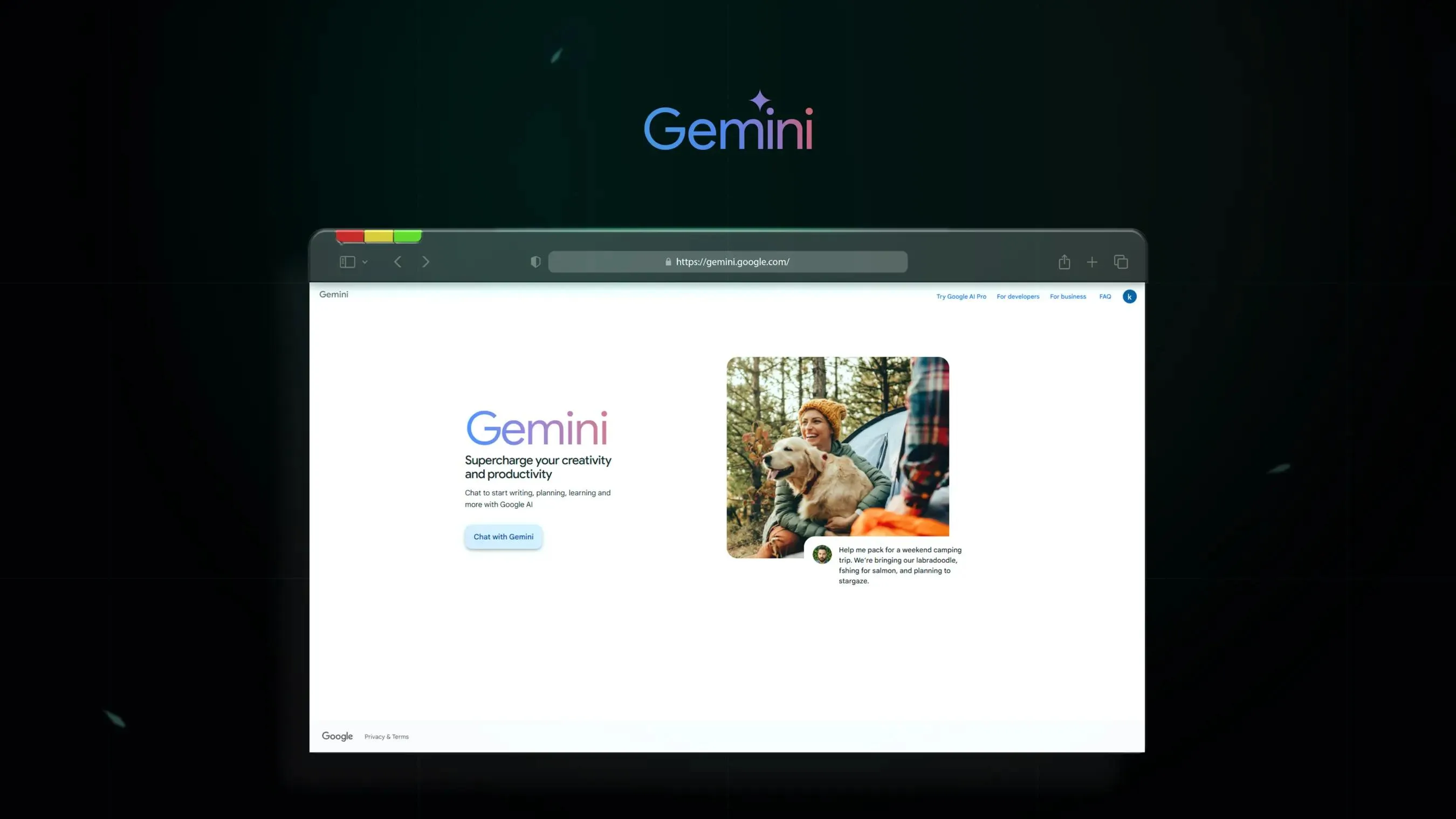
Google joined the AI race later than OpenAI or Anthropic, but it came in strong. Unlike those two, built around AI from day one, Google was already huge before the AI era.
Here’s the twist: Their move into AI showed that even an old giant can still learn new tricks. By September 2025, Gemini 2.5 Pro and Gemini 2.5 Flash had grown fast and earned a strong spot in the market. 🚀
And the numbers? Today, Google controls a noticeable share. As of now, Gemini holds about 13% of the generative AI chatbot market. It powers not just coding, but also search, Docs, and creative tools. 🌍
❧ What It Does Well
Generous free plan
Gives you access to Gemini 2.5 Pro, 2.5 Flash, and full use of Gems—their version of Claude’s Projects. Plenty to get serious work done. ✨
Google ecosystem
It connects across Gmail, Google Docs, Drive, Notebook LM, and more. If you live in Google’s world, this feels seamless.
Nano Banana for images
Access to Gemini’s Nano Banana, the best AI image model available right now. 🎨
Massive context window
Both model: 2.5 Flash and 2.5 Pro support up to 1M tokens, great for big projects. Their hallucination rate also stays low even past 100k+ tokens—something not every model can handle well. Looking at you, Meta. 😉
Custom context levels
You can set context for all chats or only for specific Gems. It helps you keep your work organized and makes chats feel more relevant. 🗂️
Video generation
With Veo 3, Gemini makes some of the best AI videos right now. You can turn an idea into a short clip in seconds—smooth, sharp, and creative. 🎥
❧ Where it falls short
Less human in tone
In our humble opinion, Gemini just doesn’t pass the vibe check as well as Claude’s Sonnet. 🤖
Weaker project tools
The Gems feature works, but not as smoothly as Claude’s projects. For long projects, this can slow you down. 🐢
Canvas editing
Gemini’s canvas can be clunky. It often struggles with precise edits compared to Claude’s artifacts.
Limited integrations
It works best inside Google apps, but doesn’t connect well with tools outside Google. Thinking of connecting your Notion second brain? Not in this town. 🌐
❧ When to Use It
-
Quick chats
Not as natural as Claude, but still solid for fast answers. Great when you just need a quick check or explanation without overthinking it. ⚡
-
Google-first workflow
Perfect if you rely on Docs, Drive, or Gmail daily. Gemini feels like a built-in helper that ties your Google world together.
-
Big context, low cost
Ideal when you need huge context windows without paying as much as you would for Claude. It’s a budget-friendly way to handle large projects or long documents. 💸
❧ Pricing
Google Gemini has a Free plan with generous access to Gemini 2.5 Pro, Gemini 2.5 Flash, and the full Gems system. This is already more than enough for most developers to get started. ✨
Then there are two paid options:
-
Google AI Pro ($25/month, 2TB storage)
Gives you Gemini 2.5 Pro and Deep Research, plus limited Veo 3 video generation. You also get Flow and Whisk for video and image-to-video tools, 1,000 AI credits each month, and more features like NotebookLM upgrades and access in Gmail, Docs, and Drive. 🎥
-
Google AI Ultra ($120/month, 30TB storage)
Includes everything in Pro but with higher limits. It unlocks 2.5 Deep Think (advanced reasoning), full Veo 3 video generation, 25,000 AI credits, the best NotebookLM features, stronger Google Search tools, Jules coding assistant at full power, and early access to new projects like Project Mariner. 🚀
👉 For a full breakdown, visit their pricing page.
❧ How to Start
Getting started with Gemini is simple. Head to gemini.google, sign in with your Google account, and you’re ready to go. 🗝️
If you already use Google Docs, Drive, or Gmail, Gemini is already waiting there for you—no extra setup needed. ⚡
❧ Perplexity
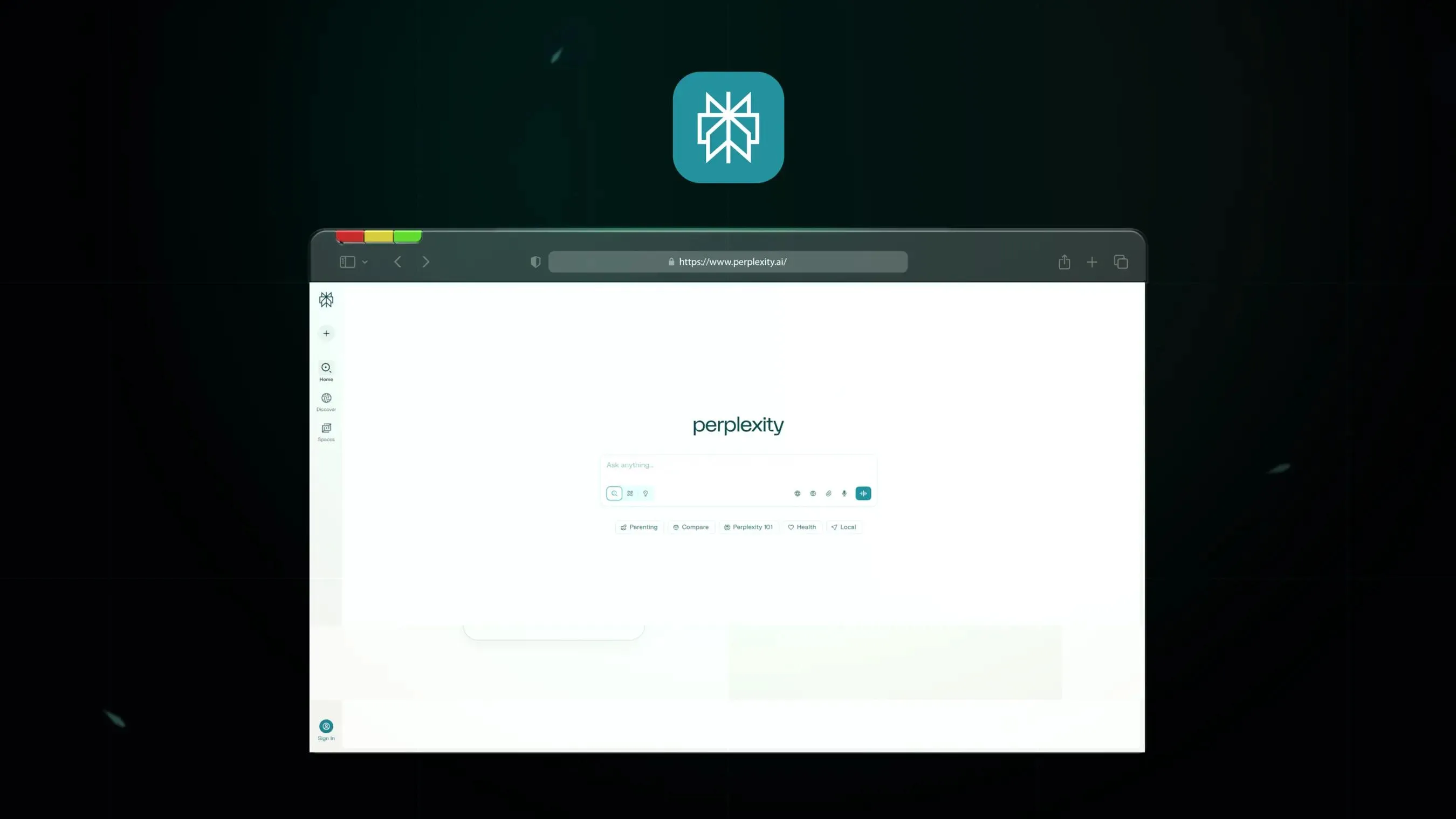
Perplexity takes a different path than ChatGPT, Claude, or Gemini. It’s built as an answer engine—pulling info straight from the web in real time. 🔍📑
What does that mean for you? Instead of long chats or coding help, you get quick, sourced answers you can trust. It’s less about conversation, more about reliable facts.
Perplexity.ai launched in 2022—and it grew fast. 📈
While other tools focused on general chat, Perplexity stuck to facts and search. It carved out a clear use case: real-time, sourced answers. The company is now valued at $18 billions, according to Sacra.
❧ What It Does Well
Real-time search
Perplexity checks the internet while you’re typing—live and up to date. That means it can pull in fresh content, breaking news, or the latest docs faster than any model on this list. 🌍
Transparent citations
Every answer links to where it came from. You don’t have to guess or hope it’s right—you can follow the source and double-check it yourself. 📑
Filtering ability
Need just news, research, or social posts? You can easily filter results. This is especially useful when digging into new tech trends or fact-checking blog content.
Follow-up memory
Perplexity remembers follow-ups better than most people expect. It keeps context within a thread and updates results without starting over.
Search-first mindset
Compared to other tools, it’s built around search, not chat. That means answers feel more like research than conversation—which is perfect when accuracy matters.
❧ Where it falls short
Not built for coding
Perplexity can answer questions about code, but don’t expect it to write, fix, or organize code as well as ChatGPT or Claude. It’s not part of the AI coding squad—more like a helpful researcher on the side. 💻
Less human in tone
It doesn’t try to chat. If you’re used to Claude’s warmth or ChatGPT’s polished replies, this will feel a bit robotic. That’s not always a bad thing—but don’t expect it to “vibe.”
Few creative tools
There’s no image generation, video tools, or visual workspace. While the others keep adding creative features, Perplexity sticks to words and links. 🎨
No tool integrations
You won’t find Perplexity inside your IDE or connected to project tools. It’s a standalone search experience. 🔌
❧ When to Use It
-
Research and fact-checking
When you need to back up a claim or verify a detail, Perplexity gets it done. It finds solid sources and lays them out for you—no guessing, no fluff.
-
Exploring new topics
Perplexity is great for getting a quick sense of something new. Whether it's a tech trend or a niche framework, it collects the highlights so you don’t have to dig through ten browser tabs.
-
Quick answers
Sometimes you don’t want a conversation—you just want the answer. Perplexity gives it to you fast, with links to back it up. ⚡
-
Source-based summaries
It’s great when you want to sum up an article or check what different sources say about the same topic. Super handy if you need to use it in a report or give credit later.
❧ Pricing
Perplexity has a Free plan with core features and limited daily usage. You get access to real-time search, web results, and basic citations—enough for light research or exploring a topic quickly.
The Pro plan ($20/month) unlocks more daily queries, faster performance, and priority access to premium features. It's best for regular use or content-heavy workflows.
For larger teams, Perplexity also offers Enterprise plans with team billing, custom usage limits, analytics, API access, and SLAs. Pricing is custom—get started via their official enterprise page.
❧ How to Start
Getting started with Perplexity is easy. Head to perplexity.ai, sign up with your email, and start asking questions right away. You’ll get answers with citations in seconds. ⚡
❧ AI IDEs & Code Completion
Let’s get to the real meat of modern AI coding. 🍽️
If you’ve been using chat apps for quick answers, this next section is where things get serious. Because in 2025, the IDE is the real arena where AI earns its stripes.
These tools plug straight into environments like VS Code—with superpowers. 🦸
They become part of your daily workflow. They help you understand your project, find bugs, build features, clean up code, and write tests, exactly when you ask.
And here’s the kicker:
Some of the most powerful tools today—like Cursor and Windsurf—started as forks of VS Code. GitHub Copilot? It runs inside VS Code. Your IDE didn’t get smarter, it became your co-pilot, reviewer, debugger, and sometimes even your pair programmer.
In short? This is where most developers live day-to-day. And now, it’s where AI works right beside you. ⚡
Let’s explore the top AI IDEs and code completion tools redefining how software gets built in 2025.👇
❧ GitHub Copilot
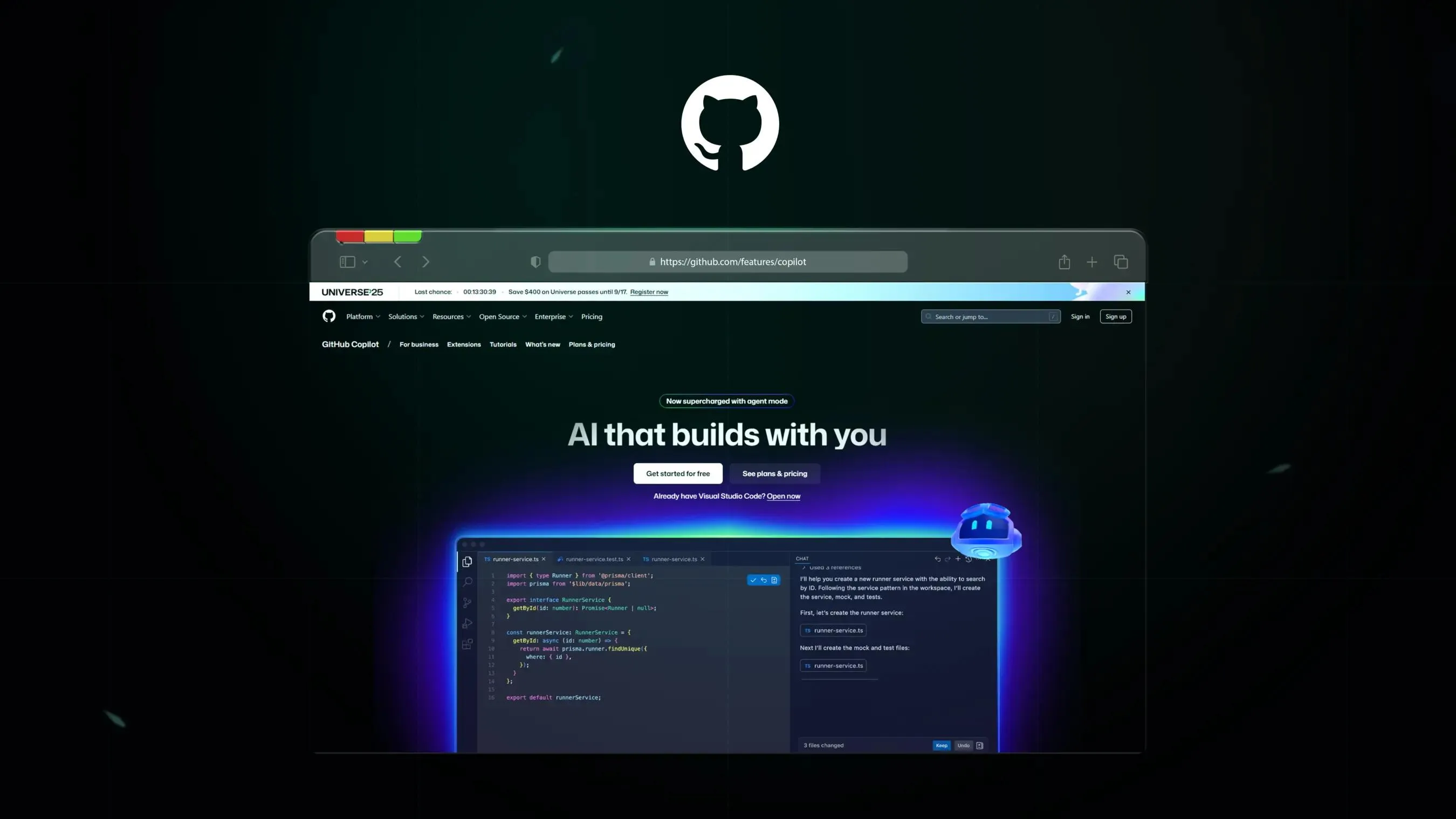
GitHub Copilot changed everything when it launched in 2021. ⚡
Back then, coding meant doing everything by hand—line after line, file after file. Copilot flipped the switch. It was the first tool to bring deep learning into the IDE in a way that made sense.
GitHub and Microsoft teamed up with OpenAI to launch Copilot. It added real-time AI coding help straight into VS Code. OpenAI built it on a massive dataset of public code and powered it with their Codex model. 🤖
Fast-forward to 2025, and Copilot is now used by over 20 million developers. It’s inside GitHub, VS Code, JetBrains, and more. 90% of Fortune 100 companies rely on it. 💼
❧ What It Does Well
Seamless editor integration
You don’t need to learn a new tool. Copilot slides right into VS Code, JetBrains, Vim, and more. It feels natural, like it was always part of your setup. ⚡
Deep GitHub ecosystem tie-in
If you spend your day in GitHub, Copilot meets you there. It connects with your repos, pull requests, and issues so the AI is working in the same space you already are. 🤝
Low cost for individuals
At $10/month—and free for students or open‑source maintainers—it’s easy to try. You get AI coding support without worrying about a big bill. 💸
Mass adoption
With 20M+ users and 90% of Fortune 100 companies using it, you’re never alone. There’s a huge community sharing tricks, tips, and answers. 🌍
❧ Where it falls short
Weak free tier:
The free plan feels more like a test drive. You’ll hit the limit fast, so it’s not practical for real work.
Best features locked behind Pro+ plan
Advanced models and bigger context live behind the paywall. If you want the full power, you’ll need to pay extra.
Not “AI‑first”
Copilot wasn’t built as an AI IDE from scratch. It adds AI to your editor, but it doesn’t transform the coding experience like other dedicated AI IDE tools we'll talk about.
Can feel generic
Sometimes suggestions are too simple. On large or tricky projects, it may lag behind newer tools. 😬
❧ Pricing
Copilot keeps things pretty simple when it comes to pricing. You can start for free, but the real power shows up once you upgrade. Plans scale with your needs—whether you’re testing AI coding for the first time or managing a full enterprise team.
-
Free
Limited trial with ~50 prompts/month.
-
Pro
$10/month or $100/year per user. Includes unlimited basic completions and ~300 GPT requests/month.
-
Pro+
$39/month. For power users; ~1500 premium GPT/Gemini requests/month.
-
Business
$19/user/month. Adds admin controls, 300 premium requests per user, secure org policies.
-
Enterprise
$39/user/month. Advanced features with ~1000 premium requests per user, GitHub Enterprise Cloud required.
👉 For the latest details, visit GitHub Copilot pricing.
How to Start Using GitHub Copilot Step-by-step
-
Create or sign in to GitHub
Use your work email if this is for a team.
-
Pick a plan
Start with Free or Pro. Teams should choose Business for admin controls
-
Install VS Code (if you don’t have it)
It’s the easiest path for beginners
-
Add the extensions
In VS Code Extensions install GitHub Copliot and Github Coplito Chat (optional but helpful).
-
Sign in
Click “Sign in to GitHub” in the Copilot prompt. Approve access. That’s it.
-
Turn it on
VS Code → Settings → “Copilot”. Enable inline suggestions and chat.
-
Try your first suggestion
Open a repo. Start a function or write a comment like fetch users by id. Gray “ghost” text appears. Press Tab to accept, Esc to dismiss.
Now pause for a second—picture this.
You’re at your desk, coffee steaming beside you, code editor glowing on screen. Copilot drops in a few handy suggestions, and it feels good… but not great.
You can’t shake the thought: isn’t there something sharper? 🤔
Here’s the hook—Copilot may be the name everyone knows, but it’s not the IDE champion. It’s like riding with training wheels: steady, but limited.
You use it because it’s everywhere, not because it’s the smartest tool on the block. 😬
The real excitement? That’s around the corner .
We’re about to step into what we see as the state‑of‑the‑art IDE AI. This is where you trade training wheels for full speed—and ride into the future of coding. ⚡
❧ Cursor

Built by four MIT grads, Cursor is the fastest-growing AI coding tool ever. 🚀
It launched in 2023 and hit $500M in annual revenue 16 months later. That’s faster than any SaaS company before it.
Cursor runs on a custom fork of VS Code. It packs in features like smart tab completions and agent tools. In our view, this is the best tool for most coding work today. 🎉
It strikes a balance between code completion, context, quality, and pricing. We use this tool most of the time. It feels like the biggest upgrade to a coder’s toolkit since we first started this journey.
It’s trusted by teams at OpenAI, Midjourney, Perplexity, and more—and backed by over $1B in funding. 💰
❧ What It Does Well
VS Code familiarity
Cursor is a fork of VS Code, so you keep the same feel, extensions, and shortcuts. You don’t need to relearn anything - open it up and get coding. ⚡
Great context awareness
It can index your whole repo, so suggestions feel like they actually “know” your project. You get smarter help that fits your code instead of random guesses. 📂
Easy to navigate design
The layout is clean and smooth. You spend less time hunting for features and more time in flow, writing code.
Fast updates and new models
Cursor ships new features often, adding the latest LLMs before most other tools. You notice the progress right inside your editor. ⚡
Great tab tool
You can autocomplete many lines at once. It keeps you moving fast and makes long functions way easier to write. ⌨️✨
Optional privacy options
Turn on Privacy Mode and your code stays local. Perfect if you’re working on sensitive projects and still want AI help.
❧ Where it falls short
Weak free plan
The free tier feels more like a demo. You’ll hit limits fast if you try to rely on it every day.
Pricing can escalate
Go past your request limits and the costs stack up fast. That can be rough if you’re working on big projects. 💸
Chat loses context
Once you max out the context window in a single chat, you need to start fresh or the model may hallucinate. That leads to context leaks, but you can prevent it by storing key details in markdown files. This is the method we urge developers to use. 📄
❧ Pricing
Cursor offers flexible plans depending on how much AI power you need. You should switch to the Pro or higher plan as soon as your 2‑week trial ends. Thank us later. 😉
-
Hobby (Free)
Limited completions, prompts, and a 2-week Pro trial.
-
Pro ($20/month)
Unlimited Tab completions, extended AI agent usage.
-
Ultra ($200/month)
For heavy users, 20× higher premium model usage limits.
-
Teams ($40/user/month)
Adds team features like org-wide privacy, SSO, and admin tools.
-
Enterprise (Custom)
Higher limits and advanced support.
👉 For the latest details, visit Cursor pricing.
How to Start Using Cursor Step-by-step
-
Go to the Cursor website
Head over to cursor.com and download the installer for your system (Windows, macOS, or Linux).
-
Install Cursor
Run the installer and set it up like VS Code. Since it’s a fork, the look and feel will feel familiar right away. 💻
-
Sign in or create an account
Use your GitHub or Google login. This connects your editor with Cursor’s cloud features.
-
Import your VS Code setup
If you’ve customized VS Code with themes, extensions, or keybindings, Cursor lets you bring those settings over. That way, your editor feels like home from the start. 🎨
-
Start with the free trial
You’ll get a 2-week Pro trial out of the box. Use this time to test features like Agent or Bugbot.
-
Import your projects
Open your existing repos inside Cursor. It will index your codebase, so the AI can give smarter, context-aware suggestions. 📂
-
Enable Privacy Mode
If you don’t want code to leave your machine, toggle Privacy Mode in settings. Perfect for sensitive projects. 🔒
-
Stay updated
Cursor ships new models and features often. It downloads updates for you, so you always have the latest LLMs at your fingertips.
❧ Windsurf

Windsurf didn’t start as an IDE. In 2021, the founders launched Exafunction to focus on GPU optimisation. By 2022, they made a bold pivot—moving towards AI developer tools. In 2025, they rebranded to Windsurf and embraced the AI IDE space. 🌊
Growth came fast. By late 2023, they had over a million developers using it. In 2025, Windsurf was making about $40 million a year and signed big names like Dell and Zillow. 📈
Now here’s the part you will care about:
Windsurf rivals Cursor. It’s often the other name that comes up when people ask, “What’s the best AI IDE right now?” 🥊
What makes Windsurf stand out, though?
It's their Cascade AI agent. Cascade tracks your edits throughout the project. It sees how files link together and updates all necessary areas. It can run code and perform debugging on its own. For you, that means support that feels like working with another engineer in real time. 🤖
❧ What It Does Well
Enterprise first
Windsurf was built with big teams in mind. You get admin tools, privacy options, and enterprise features that fit right into company workflows. 🏢
Cascade AI agent
The Cascade system can track changes across files and debug code in real time. Instead of a suggestion box, AI turns into a real teammate this time.
Great with large codebases
Windsurf manages huge projects with ease. If you’re working on a giant repo, it helps you stay on top of it - we're pretty sure it won't choke...
Smooth UI and workflow
The interface feels clean and easy. You don’t waste time clicking around—you code and let the AI help. ✨
Popular and growing
With over a million developers and big names like Dell and Zillow on board, you know you are joining a large, active community.
❧ Where it falls short
Credit-based system
You only get a set number of prompts each month. It can feel confusing and limiting compared to flat pricing. 💳
Still less popular than rivals
Copilot and Cursor have bigger user bases. That means fewer community tips and slower adoption in some circles.
Higher learning curve
You’ll need some more time to get used to Windsurf’s way of working, especially with Cascade. ⏳
Not ideal for small projects
If you want to prototype in a short time, Windsurf may feel like too much overhead. You can build smaller apps faster with simpler tools.
❧ Pricing
Windsurf keeps its pricing tied to credits, so you pay based on usage. Here’s how it breaks down:
-
Free
Includes 25 AI credits. Enough to test, but not for real projects.
-
Pro ($15/month)
500 credits. Good for individual devs who want to use Windsurf daily.
-
Teams ($30/user/month)
Everything in Pro plus team billing, dashboards, and priority support.
-
Enterprise ($60/user/month)
1000 credits per user, SSO, RBAC, and high-priority support.
👉 For the latest details, visit Windsurf pricing.
How to Start Using Windsurf Step-by-step
-
Download Windsurf
Go to windsurf.com and grab the installer for your OS (Windows, macOS, or Linux).
-
Install and open
Setup feels familiar if you’ve used VS Code. It’s fast to get running. 💻
-
Sign up or log in
Use your GitHub or Google account to connect Windsurf with your projects.
-
Import your projects
Open your repo in Windsurf. It will index the code so the AI can help with context-aware suggestions. 📂
-
Try Cascade
Highlight code or start a task, then let Cascade make changes across files. You’ll see the AI handle bigger workflows for you. 🤖
-
Test the free tier
You start with 25 credits. Use them to try completions, Cascade flows, and debugging.
-
Upgrade when ready
Move to Pro or higher once you want to use it daily. Do this in your account settings.
Check out Windsurf’s Getting Started docs for a more detailed setup guide.
❧ Kiro
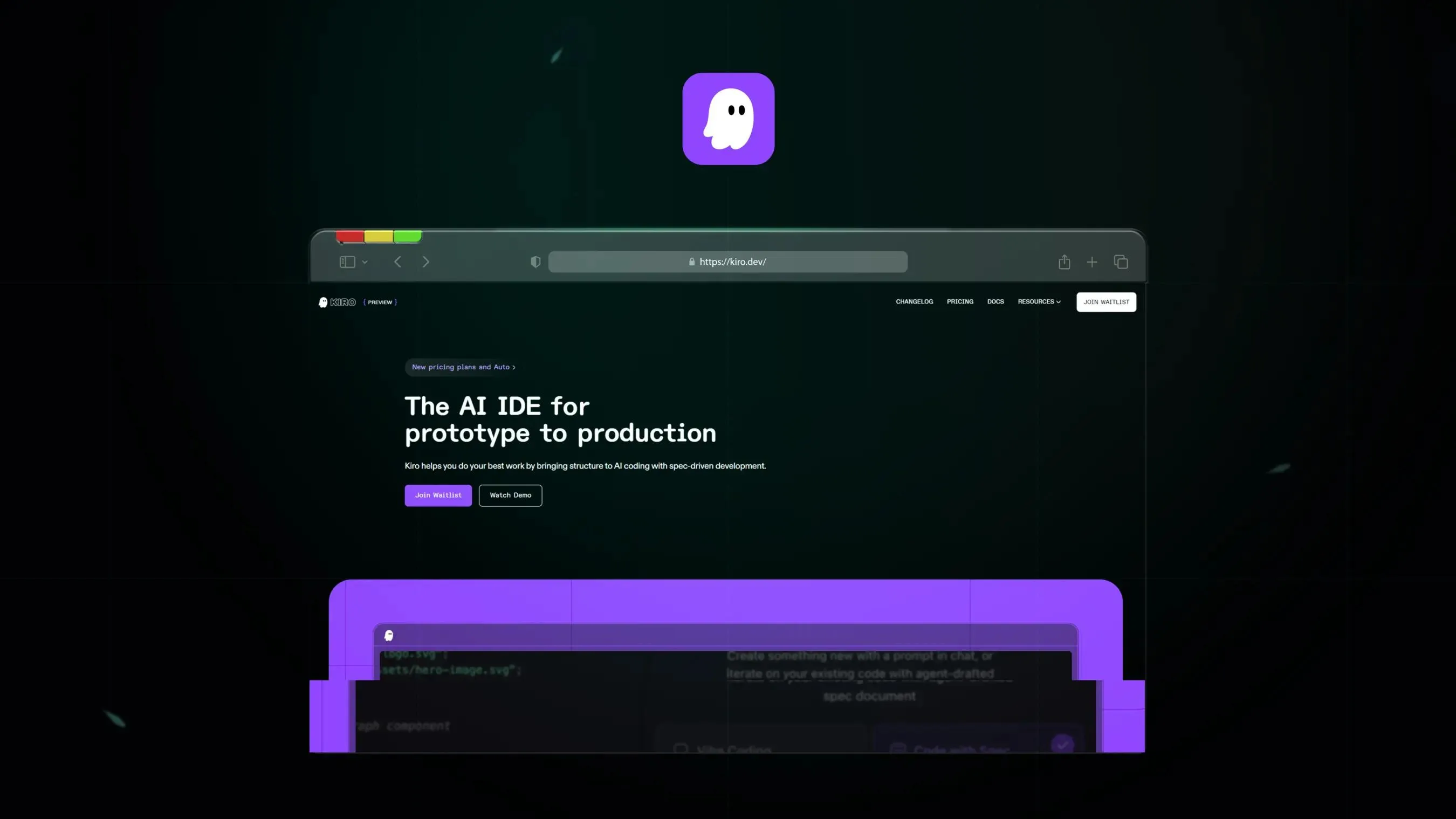
A wild VS Code Fork appeared! 🎮
Wait, another one?
Yep. It feels like AI IDEs are spawning like Pokémon these days, popping up on every corner. But this one is different. It doesn’t come from a scrappy startup, but from one of the richest and baldest men’s playbooks. 💸
Meet Kiro, Amazon’s shot at striking down Cursor and its cousins. It’s still the new kid on the block. It’s not super popular yet, but with Amazon behind it, it’s like that school kid whose dad runs the place. You know it’s got resources to grow. 🏢
So why should you care?
Kiro’s ace card is spec-driven development. Instead of vibe coding to oblivion, it forces you to map things out first: requirements, designs, and then an implementation plan. For some, that feels like extra homework. For others, it’s the structure that AI coding has been missing. ⚡
Add event-driven hooks and synced specs that stay updated. This way, you get an IDE that acts more like a process partner than a one-shot sniper. 🎯
❧ What It Does Well
Clear specs
Kiro writes user stories and plans before you code. That means you know what’s coming and you don’t get random surprises. 📄
Accurate output
With deep context, you get sharper answers and fewer misses compared to chat-first tools.
Hooks help you
Specs stay synced with your codebase. Change code, and Kiro updates the docs for you.
Detailed tasks
Every plan covers tests, loading states, and accessibility. You don’t end up with half-done features. ✅
Easy to use UI
Specs, hooks, and context servers all sit in one clear dashboard. You don’t dig around configs.
❧ Where it falls short
Can feel slow
The full spec-design-plan cycle adds overhead. For quick prototyping, Kiro might feel like “overengineering mode.” 🐢
Single task queue
Everything funnels into one pipeline. If you want a fast one-off change, it might wait behind bigger jobs. ⏳
Needs babysitting
Some commands require approval or manual trust. You can’t always set it and walk away. 👀
No live code streaming
Unlike Cursor, Kiro doesn’t show edits as they happen. That makes it feel less dynamic for “vibe coders.” 📡
Occasional quirks
As a preview product, bugs pop up (split views, chat windows freezing, tasks stuck mid-run). 🐞
❧ Pricing
Kiro keeps things straightforward when it comes to pricing. Plans scale depending on how much AI support you need. 💳
-
Free
Basic use with limited prompts and credits. Good for testing
-
Pro ($20/month)
Unlocks spec-driven development and hooks for individuals
-
Teams ($40/user/month)
Adds team features, shared hooks, and collaboration tools
-
Enterprise (Custom)
Advanced limits, security, and Amazon-backed support
👉 For the latest details, visit Kiro pricing.
How to Start Using Kiro Step-by-step
-
Download Kiro
Go to Kiro’s installation page and grab the installer for your system (Windows, macOS, Linux). 💻
-
Install and open
Setup feels familiar if you’ve used VS Code—it’s based on it.
-
Sign up or log in
Use your Amazon or GitHub account to connect projects.
-
Import your repo
Kiro will scan your code and sync specs so AI can help. 📂
-
Try vibe mode
Start coding with chat prompts that directly change your files.
-
Try spec-driven mode
Let Kiro draft requirements, design docs, and an implementation plan before coding. ⚡
-
Set up hooks
Configure hooks to auto-update tests, docs, or security scans on file changes.
-
Upgrade when ready
Free tier is limited—move to Pro or Teams for real projects.
❧ CLI Coding Tools
Something big happened around February 2025. I bet if you're a serious developer, you remember the release of Claude 3.7 Sonnet model.
They weren’t only big news, though. A brand-new kid on the block called Claude Code appeared out of nowhere as well. 🚀
CLI coding tools are like the quiet kid in high school. They sit in the corner with their books 📚 and often miss the parties.
Fast forward a little bit, and they're running the company that all the school chads are working at. That’s the rise of CLI tools in a nutshell. 💼
But hold on… 🤔
Before we dive into the tools themselves, let’s pause for a moment. What exactly are CLI coding tools, and why do they stand apart from IDE assistants?
IDE AI like Copilot or Cursor shine for micro-level coding. They sit inside your editor and feed you completions, snippets, and inline help as you type. It feels smooth and visual, perfect for when you’re deep in the editor.
CLI coding tools flip that script. They live inside your terminal, closer to the toolchain. Lower-level access makes it easier to handle end-to-end tasks. This includes big refactors, test runs, error fixes, and code shipping. ⚡
Even better:
CLI tools also shine beyond coding itself. Bringing AI into your terminal speeds up your coding – sure, but it also gives you skills your productivity guru hasn’t covered in flashy videos yet. But we’ll cover that a bit later.
For now, let me present the first contender, the one who started this arms race. 🛰️
❧ Claude Code

Here's the big guy; Claude Code was the first shot that big companies made at integrating AI coding into the CLI.
And it pays off... a ton. 🎉
Right now, Claude Code is the undisputed leader in CLI coding. More and more companies are starting to use it for their daily tasks.
The thing is:
Claude Code, owned by the same guys, makes complete use of the Sonnet and Opus models in the CLI. They optimise all tools for their LLMs.
I hope you know that tools like Cursor limit your access to the model's full potential. For instance, in MAX mode, they reduce your context window unless you pay enough. 🤑
Claude goes into Super Saiyan mode: Planning, Ultra Thinking, Context Clearing. You'll know when you see it!
❧ What It Does Well
Built for complex projects
Claude Code thrives when things get big and messy. It handles multi-file repos and long workflows with surprising ease. Instead of choking on size, it feels like it leans into it. 🏗️
Full power of Claude models
It doesn’t hold back Sonnet or Opus. You experience them in the terminal, without clipped context windows or limited features. This makes tasks feel sharper and more reliable. ⚡
Terminal-native advantage
It’s built into the CLI, so it works well with other terminal tools. Running Git, Docker, or tests with your prompts feels easy. It’s like the AI is just another tool in your kit. ⌨️
Advanced features
Modes like hooks, planning, and ultra thinking give you control over how the agent works. You can plan whole projects, reset direction, and push it harder when you need deeper reasoning. 🔧
Easy context management
Features like /clear context keep your sessions clean and focused. Instead of the AI drifting off-topic, you can reset and keep it sharp. 🧹
Same pricing as the Claude app
If you pay for Claude conversational use, you also get Claude Code. No hidden extra subscription, which makes it easy to justify. 💳
❧ Where it falls short
Not for everyone
Some devs just don’t vibe with CLI tools. If you prefer a GUI-driven workflow, Claude Code may feel cold or clunky. 🥶
Weaker change tracking
Compared to Cursor, the way Claude Code shows diffs and edits isn’t as clear. It works, but lacks the polished feedback loop some IDEs provide. 👀
Locked to the Claude family
It only uses Claude models. Yes, you can get around this with proxies, which we will not cover here, though. Out of the box, it means less flexibility.
No free tier
Everything starts paid. For new users or hobby projects, that’s a barrier to even trying it out. 💸
Costs scale fast
Entry pricing is fine, but heavy use racks up the bill faster than your newest Tesla gets to 60 mph. For big teams or daily power users, costs can stack up. 📈 Watch out for your wallet with this one!
❧ Pricing
Claude likes to keep things simple. Plans are the same whether you use Claude in chat or in the CLI. 💳
-
Pro ($20/month)
Core access to Claude Code in the terminal. Enough for solo devs or light daily use.
-
Max ($200/month)
Higher usage limits, priority access to Claude 4.0 models (Opus + Sonnet), and more context. Built for power users who need Claude all day. ⚡
-
Enterprise (Custom)
Anthropic provides team billing, SSO, and security options for larger organisations. Contact sales for limits and support.
👉 For the latest details, check Claude Code pricing.
How to Start Using Claude Code Step-by-step
-
Install Claude CLI.
Follow Anthropic’s quickstart guide here: Claude Code Quickstart. 🖥️
-
Authenticate
Log in with your Anthropic account or API key to unlock access to Claude Code.
-
Open your project
Navigate to your repo with the terminal. Claude Code works straight with your files. 📂
-
Start a session
Run Claude Code in your terminal to launch the assistant inside your project.
-
Ask your first task
For example: “Refactor the user auth module and add tests.” Claude will plan the steps and propose changes. ⚡
-
Review diffs
Claude shows you code changes before applying them. Accept or reject with a keystroke. 👀
-
Use commands
Try /clear context to reset, or enable Planning/Ultra Thinking for deeper reasoning.
-
Iterate
Keep prompting for new tasks, fixes, or improvements. Claude Code stays aware of your repo until you reset.
That’s it. You’ve got Claude running in your terminal – now go unlock your inner Super Saiyan. 💪
❧ OpenAI Codex
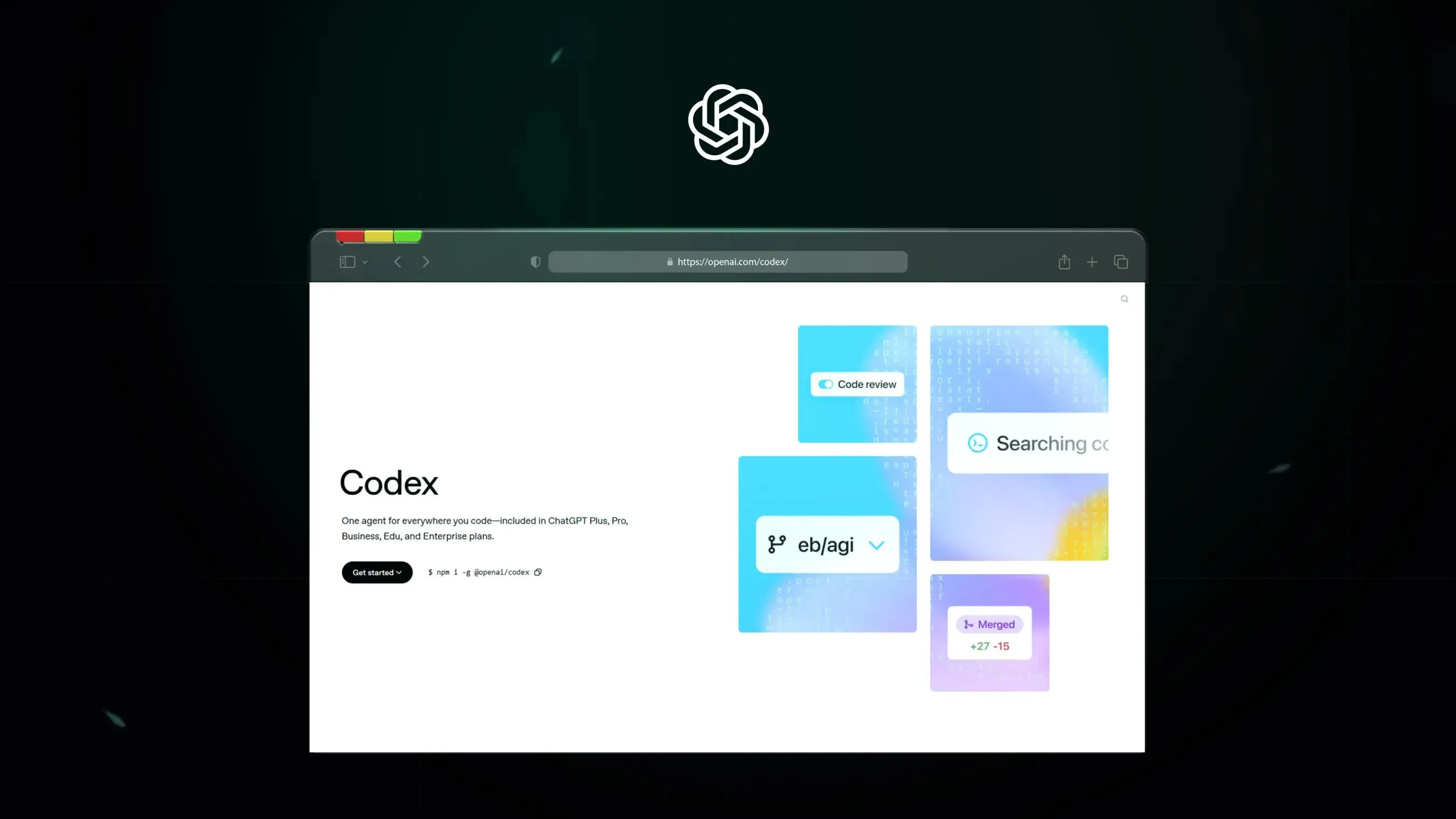
To no one’s surprise, OpenAI—Anthropic’s biggest rival—launched its own CLI coding tool. The developers intended Codex CLI to go head-to-head with Claude Code. Well... it didn't make the cut in the first run; it grew, though, and it grew fast ⚡️
So fast, it sprouted new heads like a hydra. 🐉
OpenAI rebuilt Codex into a unified agent for every corner of your workflow. Your IDE, your CLI, even GitHub pull requests—all tied to your ChatGPT account. 🔗
You can run Codex in Cursor. Open the CLI for detailed work. You can also delegate easier tasks to the cloud and have it review your pull requests. It’s everywhere you code. 🤯
Here's the thing:
It’s not as agentic or Unix-like as Claude Code, but Codex plays a different game: orchestration. It encourages developers to think like architects instead of just coders. They should focus on delegating and reviewing, not typing every line. And that mindset—paired with its integrations—makes Codex the heavyweight challenger Claude can’t ignore. 🥊
❧ What It Does Well
Powered by GPT‑5
Codex runs on OpenAI’s best model. You can tune its “thinking effort,” trading speed for depth. It follows instructions with precision and remembers details that other models overlook. 🧠
One agent everywhere
It’s in your IDE, your CLI, GitHub PR reviews, and even the ChatGPT iOS app. You don’t switch tools - Codex shows up wherever you code. 🔗
Single OpenAI account
Sign in once with your Plus, Pro, or Enterprise account. The same Codex works across devices and setups. No juggling logins. 🔑
Smarter PR reviews
Codex reviews pull requests by actually running your code in a safe environment. It catches edge cases and suggests fixes like a teammate who always has time. 👀
Local + cloud modes
Pair locally for quick loops or offload heavy tasks to the cloud. Cloud runs can even give you many PRs to pick from. ⚡
Open-source CLI
The CLI stays open, updated almost daily. You can inspect, extend, and even script Codex into your own workflows.
❧ Where it falls short
Model lock‑in
Codex shines with GPT‑5. Other models may work, but the polished features all centre on OpenAI’s stack. 🔒
Paid access only
There’s no true free tier. You need at least a Plus subscription to unlock Codex. 💸
GPT‑5 can be slow
Quality is high, but the latency is real. Bigger tasks can feel like waiting on a senior dev review. ⏳
Mindset shift required
Codex is less about typing code and more about orchestrating tasks. It works best if you think like an engineering manager.
Costs add up
Subscriptions and cloud usage can stack fast for power users or teams. 📈
Process overhead
To use Codex well, you need clean Git branches and repo hygiene. Otherwise, parallel tasks risk colliding.
❧ Pricing
Your ChatGPT subscription includes Codex. That means one payment unlocks Codex across IDE, CLI, PR reviews, and mobile. 💳
-
Plus ($20/month)
Core access to GPT‑4.1 and GPT‑5 with Codex included. Best for solo devs.
-
Pro ($200/month)
Higher limits, priority on GPT‑5, and full Codex features. ⚡
-
Team ($25/user/month)
Adds shared billing, org controls, and collaboration tools.
-
Business ($30/user/month)
Security, SSO, and admin controls for larger teams.
-
Enterprise/Edu (Custom)
Advanced limits, dedicated support, custom SLAs.
👉 For the latest details, visit ChatGPT pricing.
❧ How to Start Using Codex (Step-by-step)
Here’s the tricky part: Codex is everywhere. 😅 Let’s break it down:
Setup Codex CLI
-
Install Codex CLI.
Follow this guide to get it running on your system. 💻
-
Authenticate
-
Run your first task
In your project folder, try: codex run "refactor auth module and add tests." Codex will scan your repo and propose changes. ⚡
Codex in the ChatGPT app
-
Open ChatGPT app (iOS or web). 📱
-
Pick your plan
Make sure you’re on Plus or higher plan that includes Codex.
-
Start a coding task
In chat, type something like: “Codex, set up Docker for this repo.” Codex can hand off the work to cloud and give you results as PRs.
Codex as IDE Extension
-
Install the extension
Head to Codex IDE Extension docs and grab the VS Code/Cursor extension. 💻
-
Sign in with ChatGPT
Link it to your OpenAI account so your Codex setup is the same across IDE, CLI, and cloud.
-
Start coding
Highlight code, leave TODO comments, or kick off tasks straight from your editor. Codex will show suggestions and can open PRs automatically.
Codex in PR Reviews
-
Enable integration
Follow Codex Code Review docs to connect Codex with GitHub. 🔗
-
Pick repos
Choose which GitHub projects get automatic PR reviews.
-
Ship code
Codex reviews every new PR in its own environment. You get structured feedback and suggested fixes automatically. 👀
That’s it. Codex is now part of your daily workflow across CLI, IDE, app, and GitHub. 🚀 Honestly, you half expect it to start running your coffee machine next. ☕
❧ Gemini CLI
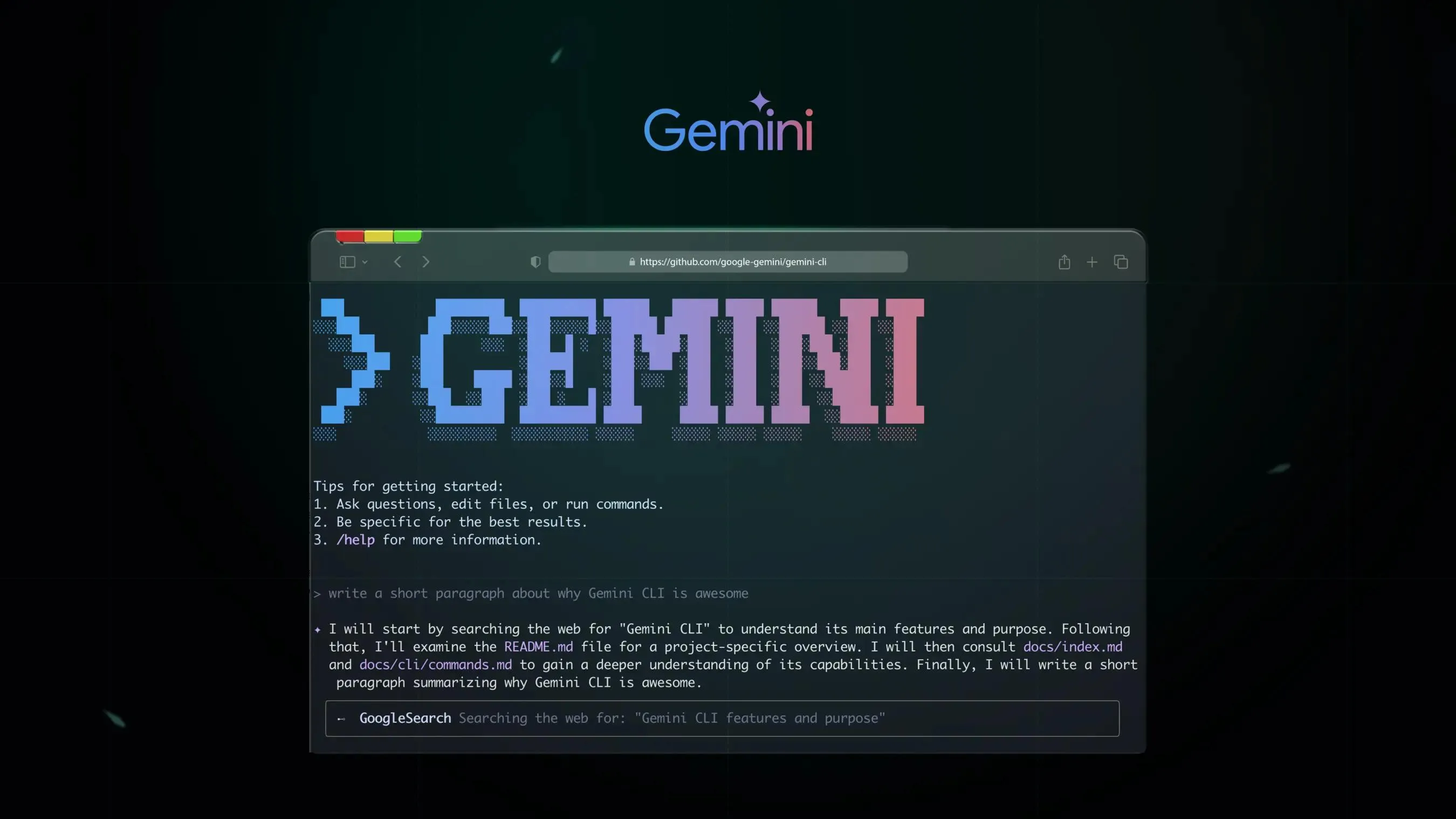
Remember that meme with the three-headed dragon? Two heads look fierce, the third one looks… goofy. 😅 That’s the vibe here. Claude Code and Codex are the serious older brothers. Gemini CLI? The younger sibling pulling funny faces in the corner. 🐉
But don’t write it off too fast…
Here’s its big card to play: it’s free. Yep, no credit card, no trial timer. Sign in with your Google account and you’re in. 🎁 That makes Gemini CLI the perfect entry point if you’re getting curious about CLI coding tools.
Under the hood, it’s no slouch either.
Gemini CLI runs on Gemini 2.5 Pro with a monster 1 million token context window. That means you can throw entire repos at it and it won’t blink. 🏗️
The catch? It’s strong, but it falls short of coding giants like Claude Opus 4.1 or GPT‑5 High in terms of coding quality.
❧ What It Does Well
Free generous limits
You get 60 requests every minute and 1,000 a day by signing in with your Google account. For most solo devs, that feels like more than enough to play and learn without worrying about costs. 💳
Huge context window
With an impressive 1 million tokens, Gemini CLI can handle large repos with ease. This is handy if you’re working on legacy projects or massive databases that would break other tools. 🏗️
Fast and reliable
Gemini Pro and Flash are both very quick models, and that speed shows when you use the CLI. Responses land fast, so you can stay in flow and not "unintentionally" visit any social media while you're working. 🚀
Open source project
The CLI is open and evolving. You can peek under the hood, extend it, or even contribute fixes if something feels off. It’s a living tool shaped by the community.
❧ Where it falls short
Weaker planning
Compared to Claude or Codex, it often thinks of fewer angles when laying out a plan. 🧩
Instruction drift
In long sessions, Gemini can lose track of your original instructions. This sometimes means re-prompting or nudging it back on course. 😅
UI hiccups
When asked to integrate with user interfaces, it can fumble or jam features together in awkward ways. 🖥️
Loop troubles
Some users report it gets stuck repeating errors until you step in. 🔄
Not the best models
While Gemini 2.5 Pro is strong, it doesn’t quite match Claude Opus 4.1 or GPT-5 High for raw coding power. That gap shows in trickier tasks.
❧ Pricing
Here's where Gemini CLI actually stands out:
It's completely free for individuals. 🎉
With your Google account, you unlock 60 requests per minute and 1,000 per day. That’s plenty of firepower to explore what CLI coding tools can do, no credit card or paywall, just straight access. 🙌
Need more?
If you’re running a bigger team or pushing heavy workloads, Google has options. You can switch to Google AI Studio for easy paid scaling. Or, go all-in with Vertex AI for enterprise billing, higher limits, and advanced controls. ⚡
In short, hobbyists and learners enjoy a great free ride. Meanwhile, companies can access Google’s enterprise tools when they need them.
How to Start Using Gemini CLI Step-by-step
-
Check requirements
Make sure you have Node.js 20 or higher installed. Run node -v in your terminal to check. If you don’t, grab the latest version from the Node.js site before going further. 🖥️
-
Install Gemini CLI. You have a few choices
- Quick run (no install): Use npx @google/gemini-cli to test it instantly.
- Global install with npm: Run npm install -g @google/gemini-cli to make the tool available everywhere.
- Homebrew (macOS/Linux): Run brew install gemini-cli if you prefer package managers.
-
Start the CLI
Type gemini in your terminal. The first time, it will ask you to log in with your Google account. Sign in through the browser popup, and you’re set up with free limits.
-
Optional: Use an API key
If you want more control, grab a key from Google AI Studio. Then set it in your terminal with export GEMINI\_API\_KEY=your\_key\_here and run gemini again.
-
Run your first task
Navigate into a project folder and try: gemini -p "Refactor the login system and add unit tests". Gemini CLI will scan the code, plan steps, and show you changes.
-
Check built-in help
Inside the CLI, type /help to see available commands. You can clear context, plan projects, or even call @search to pull in live info.
That’s it. You’re now up and running with Gemini CLI. 🎉
❧ Warp
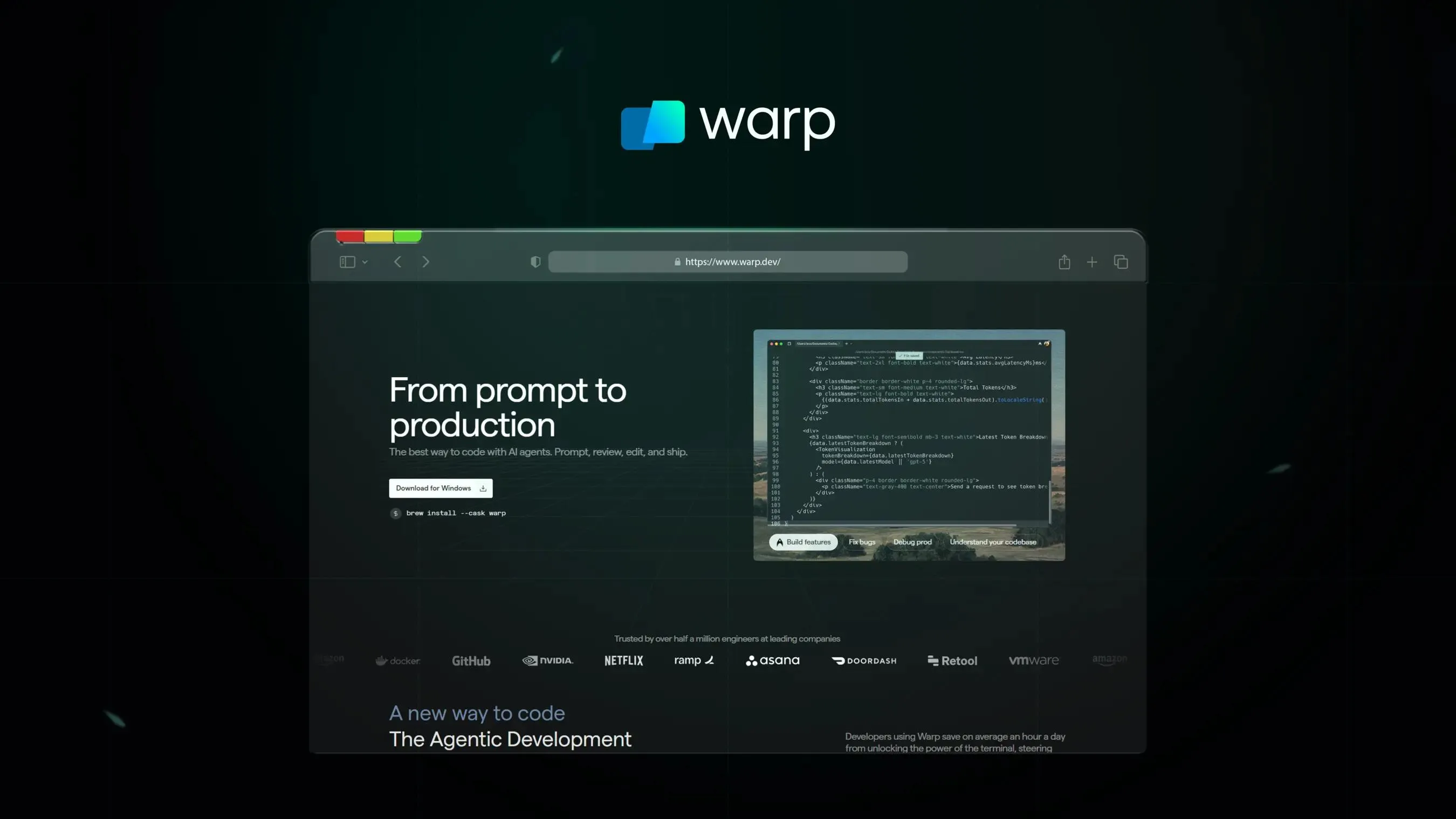
Quick question: where does Warp fit—IDE or CLI?
Trick answer: both.
Imagine Copilot or Cursor for inline help (IDE) + Claude or Codex CLI for terminal agents. Warp stitches those worlds together into an Agentic Development Environment (ADE).
You keep the raw power of the shell, but gain editor‑like comforts. 🛋️
So why list it under CLI?
Because Warp is a terminal first, but when you compare features, it competes with both IDE tools and other CLI agents. Its block‑based output, searchable history, inline AI explanations, and built‑in editor make it feel like a hybrid.
Bottom line: if IDE assistants feel cozy but slow, and pure CLIs feel fast but spartan, Warp sits alongside Claude, Codex, and Gemini as the hybrid cousin. Fewer context switches. More shipping. 🚀
❧ What It Does Well
Agent-powered terminal
Unlike Claude Code, Codex, or Gemini CLI, Warp runs multiple agents in parallel. One can squash bugs while another writes tests, all in the same session. Feels like having a coding squad in your terminal. 🪖
Prompt-first workflow
You can talk to Warp in natural language instead of typing every command. It knows when you’re asking for help versus issuing a command, bridging the gap between CLI power and IDE comfort. ⚡
Context-rich Warp Drive
Warp Drive keeps your code, docs, and snippets organized, so agents always have the right context. That’s a major leg up compared to other CLI tools where context can feel limited. 📂
Speed benchmarks
Warp has posted strong accuracy and resolution scores on coding benchmarks. For devs chasing numbers, that’s proof it isn’t just hype. 🏆
Editor built-in
While still a CLI at heart, Warp gives you inline editing and collaboration features. This makes it feel closer to an IDE than its CLI siblings.
❧ Where it falls short
Not a full IDE replacement
Even with its editor, Warp isn’t built to replace VS Code, JetBrains, or Cursor. For heavier debugging and plugin work, you’ll still need a traditional IDE. 🛠️
New workflow to learn
In long sessions, Gemini can lose track of your original instructions. This sometimes means re-prompting or nudging it back on course. 😅
Agents need oversight
Just like other CLI tools, Warp agents can go off course. You’ll still need to review, test, and sometimes correct their work. 👀
Free tier limits
The free plan only gives you 150 AI requests a month. That’s fine for casual testing, but daily users will outgrow it fast. 💳
Terminal-first experience
If you don’t enjoy working in terminals, Warp’s block-based view may feel awkward, especially compared to the more polished UIs of IDE assistants. 🖥️
❧ Pricing
Warp offers a mix of free and paid plans depending on how much AI power you need. Here’s the breakdown:
-
Free
Up to 150 AI requests/month. Great to try Warp but not enough for daily heavy use.
-
Pro ($15/month)
1,000 AI requests/month plus Warp Drive and priority access. Best for individual devs using Warp daily.
-
Turbo ($40/month)
3,000 AI requests/month with faster agents and higher limits. For power users who need Warp all the time.
-
Enterprise (Custom)
Flexible limits, SSO, team billing, and dedicated support.
For the latest details, visit Warp pricing.
How to Start Using Warp Step-by-step
-
Download Warp
Go to warp.dev and grab the installer for your OS (macOS or Linux; Windows is in preview). 💻
-
Install and open Warp
Run the installer. Setup is quick, and the terminal opens with a clean UI. ⚡
-
Sign up or log in
Create a Warp account with GitHub, Google, or email to sync settings and use AI features.
-
Set up Warp Drive
This is Warp’s hub for notebooks, workflows, and environment variables. It helps agents keep context. 📂
-
Try your first prompt
Type a natural language request like “create a Python script to fetch weather data.” Warp knows it’s a prompt and generates code.
-
Use AI for commands
If you’re stuck on a shell command, ask Warp. It explains errors and suggests fixes inside the terminal. 🛠️
-
Edit files in place
Open and tweak files in Warp while remaining in the same editor. ✍️
-
Upgrade when needed
Free users get 150 AI requests/month. Move to Pro, Turbo, or Enterprise once you need more. 💳
👉 Look up Warp's Getting Started guide for even more details.
❧ Text-to-Code Builders
It’s 7:00 on a Saturday morning.
You’re sipping coffee, finally relaxing after a stressful week as a junior web developer, still dodging AI tools trying to take your job. ☕
Then your phone rings… it’s your cousin you haven’t seen in three years. He knows you “make websites,” and now he wants one for his brand‑new dog hairstyling business. 🧑💼
You ask for specs – he’s got none.
A year or two ago, you’d think of WordPress and wonder, "Why sink time into custom code for this?". But in 2025, forget about those options.
Now you just type: "Create me a dog hairstyle business site"—and watch the magic happen ✨
Well... sort of.
Text-to-code can come in handy in many scenarios, but be warned: they won’t spin up your $50,000 site bug‑free with a full spec of functions. That’s still a dream for 2025.
Maybe we’ll have this talk again in 2027 or 2028, but for now—dear dev—if your high‑ticket client needs a website, roll up your sleeves and get to work. 💻
That doesn’t mean they’re useless today. They’re solid for prototyping bigger ideas, cranking out proof‑of‑concepts, or hacking together side projects. ⚡
One quick prompt, a couple of tweaks, and you’ve got something live without giving up your weekend. You’re happy, your cousin’s happy—and hey, maybe even the dog is wagging its tail. 🐶
❧ v0 by Vercel
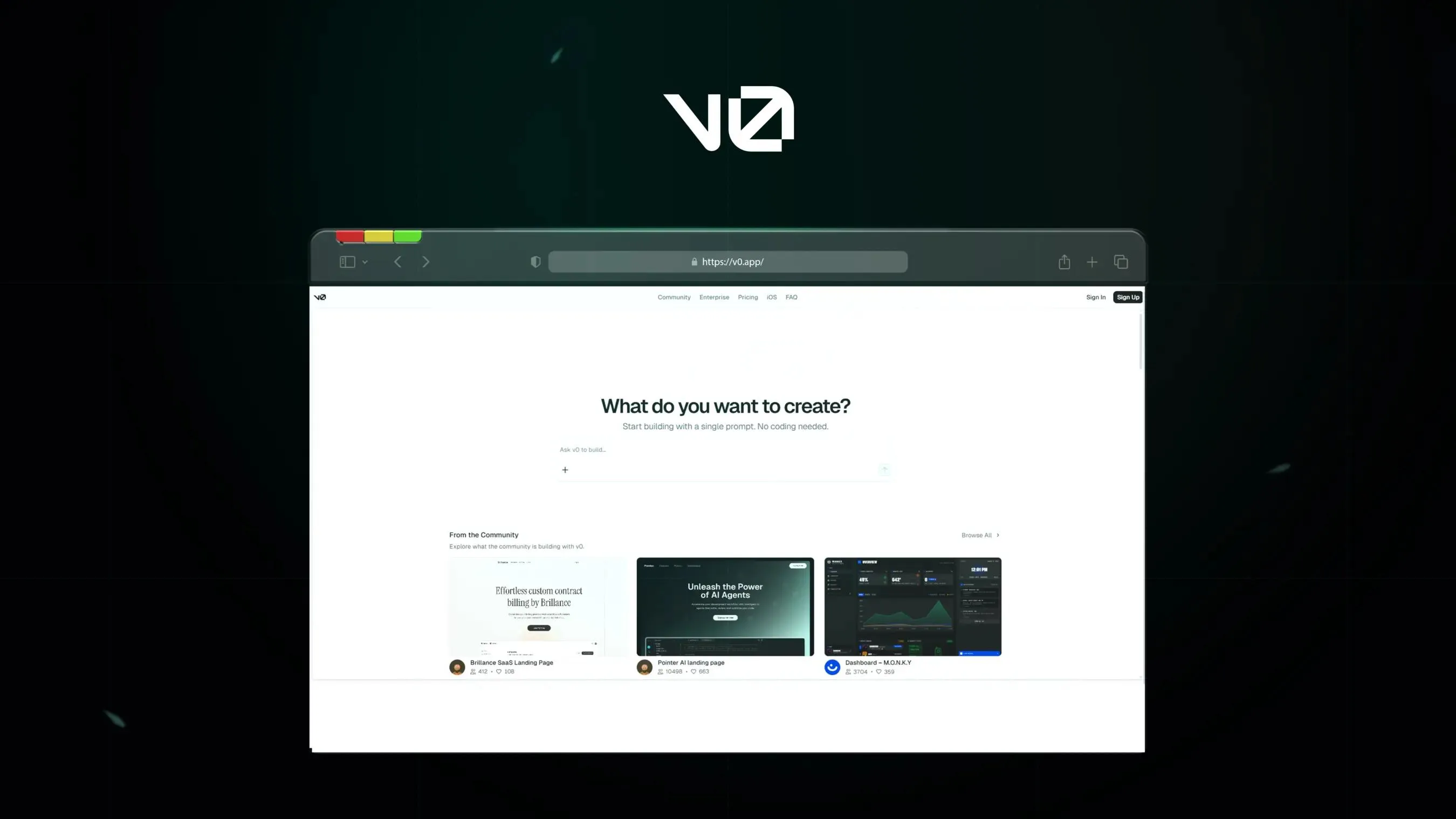
Why start with v0?
Because it's the forerunner of most text-to-code apps.
It showed up in 2023, back when "Type what you want and watch it appear" still felt like science fiction. Since then, it’s become the most popular tool in the space.
The guys at Vercel back it—you know, the Next.js crew—and that backing gives it real credibility. Millions of builders rely on it today, making it the leading text-to-code option out there.
So what can it actually do?
v0 converts your plain English description into ready-to-use React/Next.js code. It leans on the latest libraries like shadcn/ui and Tailwind, and ships straight into Vercel for instant deploys. Simple idea, yet powerful results.
❧ What It Does Well
Vercel-native DNA
You get one-click deploys, previews, and analytics baked right in. If you already work with Next.js, it feels like home. 🚀 Instead of fiddling with configs, you push a button and watch it run.
Agentic workflow
Instead of spitting out code and stopping, v0 maps tasks, fixes common hiccups, and keeps nudging you forward.
Rapid UI generation
Clean, modular React code is its bread and butter. With shadcn/ui and Tailwind in the mix, you can spin up polished components fast. Perfect if you’re sketching design systems or testing new looks.
Versioning + GitHub
With built-in history, branches, and repo sync, you stay on top of changes. 🤝 You can stay in flow while still keeping a paper trail for your team.
Accessible to non-devs
Natural-language prompts and visual editing make it less scary for teammates who don’t code. They can describe what they want, and you polish it.
❧ Where it falls short
Credit/token pricing
Everything you do costs credits. Each extra run, each AI mistake—it all eats your balance. You’ll want to watch the meter, or you’ll burn through it faster than expected. 💳
Costs can spike
Even a simple 3‑page form can add up. 💸 With no spending caps, bills can sneak up on you if you’re not paying attention.
UI-first bias
Just like other CLI tools, Warp agents can go off course. You’ll still need to review, test, and sometimes correct their work. 👀
Prompt sensitivity
Be vague and you’ll regret it. The AI takes you literally, so unclear prompts mean extra rounds of fixing. Clear input = better output. ⚡
Advanced customization friction
If you’re the kind of dev who likes full control, you might feel boxed in. Compared to an IDE and your own stack, v0 has limits that can slow down power users.
❧ Pricing
Before you dive in: v0 runs on credits. Every action—whether it’s generating a new UI or asking the agent for changes—uses them. Plans scale up depending on how often you build and how big your team is.
-
Free
A starter pack of credits each month. Great if you want to kick the tires and see what v0 can do. Expect limits fast once you start iterating.
-
Pro ($20/month)
Gives you higher credit limits plus private projects. Good fit for solo builders or freelancers who need more than the free tier but don’t want a team plan yet.
-
Team ($30/user/month)
Adds collaboration features. Perfect if you’ve got a small crew working together and you don’t want to juggle logins or share a single account. 🤝
-
Enterprise (Custom)
Built for bigger orgs that need security, SSO, audit logs, and SLAs. If compliance is part of your life, this is where you’ll land. 🏢
👉 Check the official pages for the fine print: v0 Pricing and Docs: Pricing.
How to start with v0 Step‑by‑step
-
Sign in at v0.app
Go to v0 by Vercel. Use GitHub or email.
-
Start a chat or projec
Describe your app in plain English. (Be specific—screens, data, actions.)
-
Review the first pass
Check the live preview and generated React/Next.js code.
-
Iterate with prompts
Ask for changes: “add auth with email + magic link,” “dark mode,” “CRUD for posts.”
-
Sync GitHub
Connect a repo for versioning and PR‑friendly work.
-
Deploy to Verce
One click to a preview URL; share with stakeholders.
-
Watch usage
Meter your credits—keep an eye on your spending in Billing.
-
Go deeper (optional)
Use the Quickstart guide or the Models/API docs when you’re ready to integrate v0 into your own tools.
❧ Bolt.new

"Bolt? You mean that driving app?" 🚕
Nope – this one won’t call you a taxi, but it might just drive you from idea to working code. 😅
Bolt.new is a text-to-code editor from StackBlitz. It launched in late 2024 and flipped the company’s story from near collapse to breakout success. In a few months, it rocketed from $80k ARR to tens of millions. 🚀
That growth came from one promise: no setup or installs – just open a tab and start building.
Who’s behind it?
The StackBlitz crew is best known for WebContainers, and that’s the tech magic under the hood. It powers Bolt to run a full Node.js environment right in your browser—with npm, terminal, file system, and more, all built in.
With it, you get a full coding playground right in your browser. You can use backend APIs, databases, and popular frameworks like Next.js, Svelte, Astro, and Remix, plus Tailwind and shadcn. It also brings in live error checks, quick file edits, and one‑click deploys. All of that makes it feel a lot closer to real coding than most other text‑to‑code tools.
❧ What It Does Well
Complete development ecosystem
You get a real Node.js server, npm packages, terminal, and console—all running in your browser. ⚡
Real‑time error detection + fixes
Mistyped something? The AI flags it and suggests fixes on the fly, saving you from digging through logs.
Framework buffet
Next.js, Vue, Svelte, Astro, Remix—you name it, Bolt runs it. Tailwind and shadcn included. 🍽️
Deployment pipeline built‑in
Push to Netlify or use Bolt hosting with a click. You even get a .bolt.host domain by default.
Full‑stack support
Unlike many text‑to‑code tools, backend APIs and databases are part of the deal. You can test the whole flow, not just the UI.
WebContainers tech
Isolated, fast, and secure. This is StackBlitz’s superpower—and you feel it every time you run code.
Collaboration mode
Teammates can join, comment, and review in real time. Perfect for hackathons or internal demos. 🤝
❧ Where it falls short
Token hungry
Complex projects burn through tokens fast. If you build often or push big apps, you’ll top up more than you’d like. Tokens are your fuel here, and Bolt guzzles them. ⛽
Prompt learning curve
Clear prompts matter. If you’re vague, expect messy results. You’ll need practice to “speak AI” well enough to get what you want.
Busy interface
Bolt packs in a ton of panels and controls. For newcomers, it can feel like stepping into the cockpit of a plane. 🌀 You’ll learn, but it takes patience.
Resource heavy
Running Node, npm, and more in-browser eats CPU and memory. On weaker laptops, fans will spin, and things might crawl.
UI focus weaker
It can handle UI, but its real strength is full-stack. For design-only workflows, it feels less smooth.
Closed platform
Bolt is proprietary. You can’t fork it or tweak deep internals, which may limit freedom if you like open source.
❧ Pricing
Bolt works on a token system. The free plan gives you daily credits, but real use requires a subscription. Here’s the lineup:
-
Free
150k tokens/day, 1M tokens/month. If you hit the cap, you wait until tomorrow. Good for quick experiments.
-
Pro ($20/month)
10M tokens/month. Enough for steady side projects.
-
Pro 50 ($50/month)
26M tokens/month. For heavier usage.
-
Pro 100 ($100/month)
55M tokens/month. A fit for small teams or pros building often.
-
Pro 200 ($200/month)
120M tokens/month. Now you’re running real workloads.
-
Teams ($30/user/month)
Shared tokens, collaboration features, history.
-
Enterprise (Custom)
Tailored for big companies with SLAs and support.
👉 Check official details at Bolt.new pricing.
How to start with Bolt.new Step‑by‑step
-
Sign up
Go to bolt.new and sign up with GitHub or email.
-
Pick a framework
Next.js, Astro, Svelte, Vue, Remix, or Tailwind/Shadcn combo.
-
Describe your app
Type your vision: features, style, audience. Use the “enhance prompt” tool if needed.
-
Preview + test
Run it in browser with live preview.
-
Refine the code
Edit directly, lock files you don’t want changed, target areas for updates.
-
Add packages
Install npm deps right inside Bolt.
-
Debug issues
-
Deploy
Push to Netlify or Bolt hosting with a click. Paid plans add custom domains. 🌍
👉 For deeper help, see the Bolt Docs and Getting Started guide.
❧ Lovable
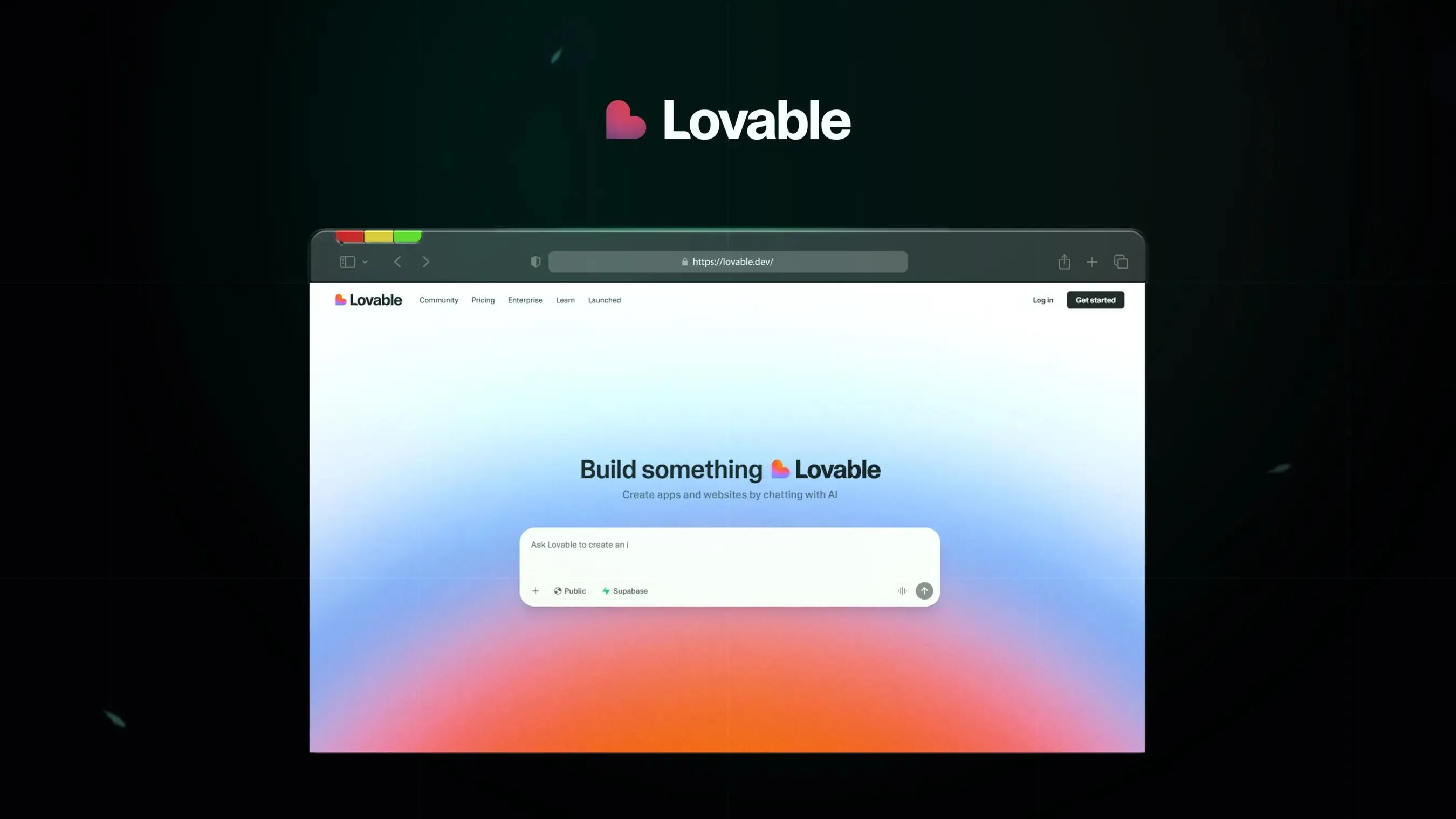
Lovable, one of the fastest-growing startups in Europe—sounds 100% like a dating app. ❤️
Well, instead of finding soulmates, it finds you production-ready websites you can spin up anytime. ✨
Lovable is, indeed, lovable. 😍
The story is simple: Lovable grew out of the viral GPT Engineer project in 2023. Founder Anton Osika used that momentum to turn it into a rocket ship. Within months, the company went from zero to millions in ARR and raised a $200M Series A at a $1.8B valuation. 🚀
So why does Lovable stand out?
From a single prompt, it builds a full app: frontend, backend, and database included. That’s rare among text‑to‑code tools.
You also get real-time multiplayer coding, like Google Docs. Plus, there's a visual "What You See Is What AI Imagined" editor, so non-devs can easily make changes.
If you’re a developer, Dev Mode puts you in the driver’s seat, and you can take over and steer the code yourself. It’s not the same as full custom work, but it gets you a lot closer.
❧ What It Does Well
Real-time collaboration
Up to 20 teammates can jump in at once. It’s like multiplayer coding. 🤝 You can brainstorm, test, and build together in real time.
Predictable pricing
Every AI message costs 1 credit, nothing more. That means you always know what you’re spending. No surprise token spikes or runway bills. 💵
Security first
Automated scans check your code for vulnerabilities as you go. 🔒 It’s especially useful if you’re using Supabase, catching issues before they grow into bigger problems.
Visual editor WYSIWAI
Non-devs can jump in and tweak text, colors, or layout without touching code. It’s a friendlier way for your teammates to shape the app.
Supabase integration
Authentication, file storage, and schemas come wired up from the start. That means you don’t waste time wiring databases yourself.⚡
Dev Mode
For pros who want control, Dev Mode lets you open the hood and edit every line.
Community features
You can share projects with the public, remix apps created by others, and showcase your builds. 🌍 Show your vibe-coded website to your friends!
❧ Where it falls short
Still new
Infrastructure is younger than older platforms. Bugs and scaling hiccups can pop up now and then. 🐞
Smaller ecosystem
You won’t find the same plugin or library depth as the bigger, older players. That can limit options when you need niche features.
Framework limits
Tied to React/Next.js. If you prefer Angular or something else, you’re out of luck for now.
Credit caps
Complex projects eat through credits fast. If you don’t use them all, they don’t roll over, which can feel wasteful. 💸
Needs human review
AI output isn’t always optimised or secure. You’ll still want to review the code before shipping.
Prompt picky
Vague prompts = vague results. To get the best apps, you need to very specific with your requests.
❧ Pricing
Lovable works on a token system. The free plan gives you daily credits, but real use requires a subscription. Here’s the lineup:
-
Free (5 credits/day, up to 30/month)
Includes unlimited public projects and collaboration for up to 20 people.
-
Pro (from $25/mo – 100 monthly credits + 5 daily credits)
Adds private projects, roles & permissions, custom domains, Dev Mode, and Supabase integration.
-
Business ($50/month)
Everything in Pro plus SSO, personal projects, opt-out of data training, and design templates.
-
High tiers
Scale up to 10,000 credits for $2,250/month if you have a strong need for it.
-
Enterprise (Custom)
Custom Designed for large companies. Includes support, integrations, and the option to opt out of data training.
👉 See the official page for details: Lovable pricing.
How to start with Lovable Step-by-step
-
Sign up
Go to lovable.dev. Use Google or GitHub for faster access.
-
Create a project
Start fresh with a prompt or use a template.
-
Describe your app
Be clear: features, data, and flows. The better your ask, the better the app.
-
Let AI build it
Watch as frontend, backend, and database spin up. Preview it live.
-
Refine
Use chat mode, visual editing, or Dev Mode to tweak.
-
Invite teammates
Up to 20 can join you in real time. 🤝
-
Run a security scan
Especially if you’re using Supabase.
-
Deploy
Click publish. Paid plans add custom domains. 🌍
For more, check the Lovable Docs and their Getting Started guide.
❧ Quality, Debugging & CI/CD
You still there? Good...
After a heavy meal, it's time for dessert! 🍰
We’ve already covered IDEs and text-to-code builders – the main course. Now it’s time for the final treat: tools that polish, debug, and keep your code safe once it’s already on the plate.
These aren’t direct rivals. Each one has a unique role—reviews, security, or debugging—yet they all simplify your dev life. And honestly, who doesn’t want a little extra help cleaning up the mess AI (or you) already made? 😅
So grab a coffee refill ☕ and let’s check out three quality-of-life tools that deserve a spot in your workflow.
❧ CodeRabbit
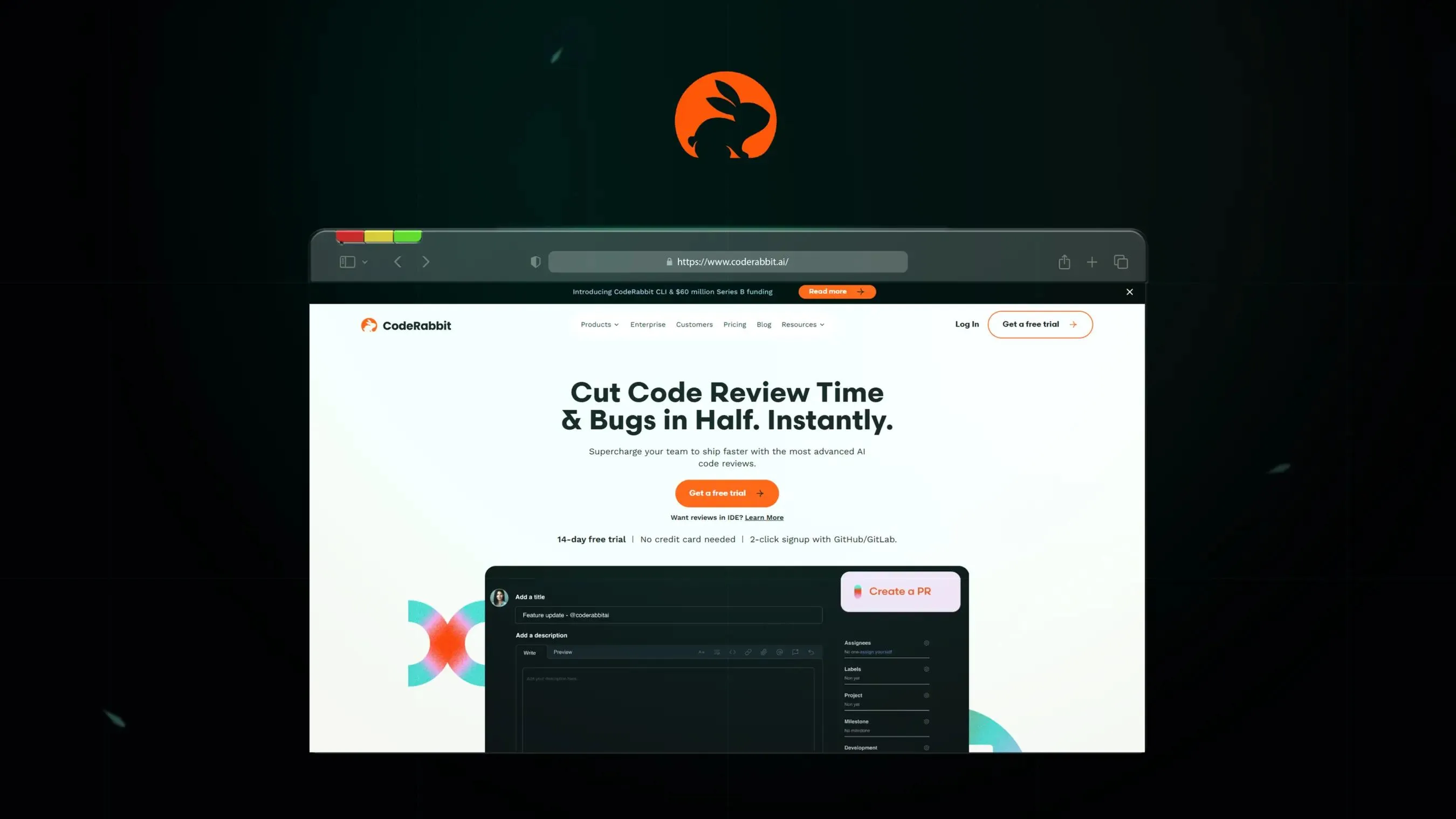
You push a pull request late Friday, ready to finally relax. Saturday rolls around—and when you thought you’d finally dodge your cousin’s random "build me a dog site" calls, your client rings instead. Something broke. 🫠
Your weekend? Toast. All thanks to that unreviewed code smoldering in limbo.
And think what would happen if you had CodeRabbit… nothing. Because your code would have been checked when the rabbit police showed up. 🐇
Code Rabbit is your always‑on AI reviewer, built to make code cleaner and safer before you ship.
Launched in 2023 by Harjot Gill and Gur Singh, CodeRabbit grew fast. Today, it’s one of the most installed AI apps on GitHub and GitLab. Over 70,000 open-source projects and 5,000 paying teams trust it.
❧ What it does
At a high level, CodeRabbit works in two places: inside your Git platform and in your IDE. That means it can check pull requests after you push them, or catch problems right as you code.
PR reviews in GitHub/GitLab/Bitbucket
Drop in a pull request, and CodeRabbit does its magic. It scans dependencies and runs 40+ linters and scanners, all while providing clear, human-like feedback. You also receive file-by-file walkthroughs and flow diagrams. These show how your changes affect the system. 🖼️ Then you can chat with it in PR comments and even apply one-click fixes.
PR summaries + docs
For each pull request, CodeRabbit can auto-generate a summary, unit tests, or docstrings. Handy if you hate writing boilerplate.
IDE reviews (VS Code, Cursor, Windsurf)
With the extension, you catch issues before they hit a PR. Line-by-line feedback, reviews of uncommitted changes, and instant fixes keep you moving. And yes, free for individual devs (with limits). ⚡
One-click fixes
You can apply suggestions immediately in both PRs and IDE. Saves you from the copy-paste grind.
Learning + adaptation
Each time you accept or reject feedback, CodeRabbit learns. Over time it tunes itself to your coding style and cuts down on false positives.
❧ Pricing
CodeRabbit works on a per-seat model (the dev who opens PRs is the "seat"). All plans start with a 14‑day free trial.
-
Free
Summaries, IDE reviews, unlimited repos. Limits: 200 files/hour, 3 quick reviews in a row. No chat. Includes 14‑day Pro trial.
-
Lite ($15/month)
Unlimited PR reviews, customizable learning, web queries, and IDE reviews. Limits: 400 files/hour, plus some chat/message caps.
-
Pro ($24/month)
Adds 40+ linters, Jira/Linear integration, agentic chat, analytics dashboards, and doc generation. Free for public repos forever. 🐙
-
Enterprise (Custom)
Custom pricing. Everything in Pro plus self‑hosting, SLAs, VPN support, and dedicated success managers.
👉 For details, check CodeRabbit pricing.
❧ How to start with CodeRabbit
PR reviews setup GitHub
-
Create account + link GitHub
Go to coderabbit.ai, sign in with GitHub, and authorize permissions.
-
Add repos
Choose which repos CodeRabbit can see (all or selected).
-
Install GitHub app
Confirm access so the CodeRabbit bot can review PRs.
-
Test it.
Open a PR in your repo—feedback appears in minutes with comments and summaries.
-
Optional configs
Add a .coderabbit.yaml file or tweak org‑wide settings for custom rules.
VS Code extension setup
-
Install. In VS Code
Go to Extensions, search “CodeRabbit” and hit install.
-
Log in
Sign into your CodeRabbit account to link the extension.
-
Start a review
Use the sidebar to review staged/uncommitted changes. Inline comments flag issues instantly. ⚡
-
Apply fixes
Accept one‑click suggestions or send them to your AI assistant (like Copilot) for quick patching.
-
Tweak settings
In the sidebar, adjust auto‑review behavior and AI agent integration.
Docs here: CodeRabbit Docs and Getting Started.
❧ Snyk Code
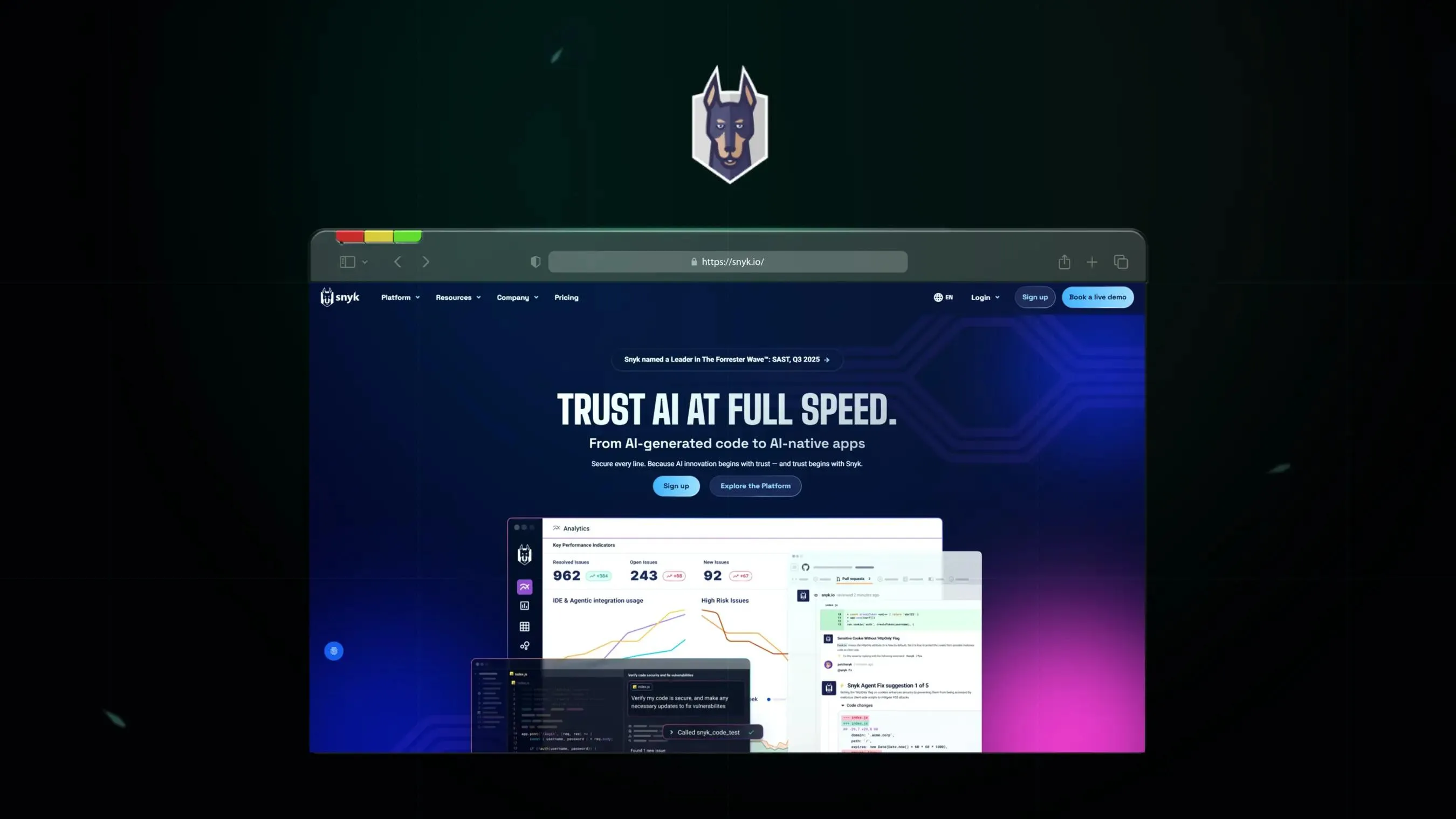
Ever shipped an app and realised your dependencies are basically Swiss cheese? 🧀
Well, Guy Podjarny and his crew have you covered.
They started Snyk back in 2015, and since then, it’s grown into one of the biggest names in security. It now supports over 1.5 million developers.
It has offices from Boston to Tel Aviv. Plus, Forrester named it a Leader in the 2025 SAST report. 🚀 Fortune 500s and plenty of scrappy startups trust it to keep the hackers out.
Snyk is a complete security platform. It protects open source, containers, IaC, and more. But let’s zoom in on Snyk Code—its static analysis tool.
Picture it as a watchdog living inside your IDE, barking every time you slip in a vulnerability. It scans as you type and catches issues before they reach production. Plus, it suggests fixes using its DeepCode AI engine.
And here's the kicker:
Its AI has absorbed millions of code patterns. It mixes classic analysis with machine learning. The result? It knows how to tell a real security risk from harmless fluff. You enjoy fewer false alarms, smarter advice, and a tool that learns with you instead of bothering you all the time. 🤖
❧ What it does
Real‑time code scanning
It flags vulnerabilities, misconfigs, and even “code smells” while you write. You don’t have to wait until CI blows up. ⚡
AI‑powered fixes
Backed by DeepCode AI, Snyk suggests concrete patches and safer patterns straight in your editor.
Wide language support
From JavaScript to Swift, Snyk covers the stacks most of you use daily.
Integrations everywhere
Works in IDEs (VS Code, JetBrains, Eclipse), CI/CD (Jenkins, CircleCI, GitHub Actions), and SCMs like GitHub and GitLab.
Beyond code
While Code is the star here, Snyk also scans dependencies, containers, and IaC configs. We recommend checking those too if you want the full safety net. 🛡️
❧ Pricing
Snyk isn’t the cheapest kid on the block; it’s security for serious teams. Plans vary by product bundle, but here’s the gist:
-
Free
Good for tinkering and small projects. Includes 100 Code tests/month, unlimited OSS scans, and real‑time scanning. But no license checks or SBOM. 🆓
-
Team ($25/project/month)
Adds up to 1000 Code + OSS tests/month, license compliance, and deeper fix suggestions. A fit for small businesses and dev teams.
-
Enterprise (Custom)
Unlimited tests, advanced reporting, Kubernetes/IaC scanning, compliance options (SOC2, ISO), data residency, and dedicated support. Pricing runs into the thousands—expect $5k–$70k depending on scale. 🏢
👉 Full details at Snyk pricing.
How to start with Snyk
-
Create account
Sign up for a free Snyk account at snyk.io.
-
Install the CLI or extension
- CLI: Download the Snyk CLI. Authenticate, then run snyk test on your project.
- IDE: Install the Snyk Security extension in VS Code (or JetBrains/Eclipse).
-
Authenticate
Log in via GitHub, SSO, or API token.
-
Scan your project
Import repos in the Snyk dashboard or run scans directly in your IDE. Vulnerabilities show up inline.
-
Fix issues
Apply suggested patches or upgrade dependencies. Snyk will guide you toward safer versions. 🔒
-
Add to CI/CD
Integrate with GitHub Actions, Jenkins, or CircleCI so every PR gets scanned.
-
Go deeper
Configure IaC, container, and OSS scanning if you want full coverage.
Docs: Snyk Docs | Getting Started
Jam

I'm sure you've encountered this before. A bug report with a list of steps to reproduce longer than Gordon Ramsay's Roasted Herb-Crusted Lamb Rack with Black Garlic Jus and Smoked Rosemary Mash recipe.
Seems like Dani Grant prefers simple chicken and rice. 🍗
Jam aims to simplify bug reports. It makes them quick and easy to understand.
Ex-Cloudflare PMs Dani Grant and Mohd Irtefa started Jam in 2020. It faced seven failed versions before finally finding its groove. It’s now a top bug reporting tool, with over 200,000 users from companies like T-Mobile, Rippling, and Staples. 🚀
And the best part? It can cut bug resolution time by 70%.
❧ What it does
Jam is basically your fast lane to debugging sanity. Instead of endless Slack threads and "can you reproduce this?" emails, it captures everything for you.
Screenshots & recordings
Snap a page, crop a section, or record your screen (desktop or browser tab). All the technical logs ride along automatically.
Instant Replay
The killer feature: grab the last 30–120 seconds of what just happened. No need to manually reproduce the bug.
Full context
Every Jam comes with console logs, network requests, device info, browser version, and user actions. 🖥️ Developers see the full picture instantly.
AI Debugger
Opt-in feature powered by GPT. It processes logs, replays, and metadata to find root causes. It can even rewrite code snippets. You can chat with it, ask follow-ups, and choose between quick fixes or verbose explanations. 🤖
Integrations
Push Jams straight into Jira, GitHub, Slack, Linear, Notion, and more. Your bug report becomes a ticket with all the details attached.
Mobile inspector
Report bugs from iOS or mobile web with device-specific details.
Privacy & security
SOC2 Type II, AES‑256 encryption, plus blur tools for sensitive data. 🛡️
Jam may be chicken and rice, but it’s the kind served at a Michelin‑star spot. 🏅
❧ Pricing
Jam keeps things simple, with a free tier and paid plans for heavier use.
-
Starter (Free)
Unlimited Jams, 5‑minute recordings, Instant Replay, annotations, logs, and 200 AI debugger generations/month. Good for side projects or open source. 🆓
-
Team ($14/creator/month)
Everything in Free, plus 15‑minute recordings, backend logging, AI autofill for titles/steps, private folders, and up to 200 AI generations. Includes unlimited viewers. Perfect for small teams. 🤝
-
Enterprise (Custom)
Unlimited everything, SSO, audit logs, analytics, priority support, and custom data retention. Built for big orgs.
-
Support add‑on (Custom)
Hook Jam into Intercom to turn customer tickets into dev‑ready bug reports.
👉 See full details at Jam pricing.
❧ How to start with Jam
Browser extension desktop
-
Install the Jam Chrome extension (works in Edge, Arc, Brave, Opera too).
-
Pin it to your toolbar for quick access. 📌
-
Create an account with your email.
-
Click the icon to take a screenshot, start recording, or use Instant Replay to save the last 30 to 120 seconds.
On iOS
-
Install the Jam iOS app and log in.
-
Use screen broadcast to capture a bug.
-
Trim, describe, and send it to your team.
Using AI Debugger
-
Open any Jam and hit “Ask AI Debugger.”
-
Approve sending the context to GPT (opt‑in only).
-
Get suggestions, possible fixes, and even rewritten snippets. You can ask questions or dig deeper in chat.
Docs: Jam Docs | Getting Started
❧ How Developers Use AI Tools in Their Workflow
❧ Remember who’s driving
The first rule of AI tools? You stay in control. The second rule of AI tools? You stay in control. 🥊
Don’t fool yourself, AI isn’t a magic wand. 🪄 It’s closer to a box of power tools: awesome when you know what you’re doing, dangerous if you zone out.
One wrong move and you’re cutting through your desk instead of the wood.
Start simple, let AI handle the repetitive chores, and keep your hands on the steering wheel.
Here’s the shift: developers are moving away from the old basement archetype—the coder hunched over for 12 hours straight, pounding out lines in the dark. Now they’re stepping into the role of architects. 🏗️
The grunt work—boilerplate, tests, wiring APIs—is sliding onto AI’s plate. That frees you to design systems, make decisions, and think about the big picture. But don’t kid yourself: your review matters more than ever. AI can generate, but it can’t own the consequences.
So yeah, AI is your copilot, but you’re still the one landing the plane. ✈️ Skip the review, and you’ll spend your weekend untangling spaghetti bugs instead of sipping coffee. ☕
Stay sharp, and you’ll actually have time to enjoy that coffee while AI does the grunt work.

❧ Master your tools
Here’s the golden rule: the best workflow isn’t about hoarding every shiny new app. 🪙 It’s about you picking a few, learning them inside out, and actually mastering them.
Sounds boring? Maybe. But let’s be real: swapping tools all the time is like changing keyboards every week. ⌨️ Sure, you get that shiny "new toy" feeling, but your typing speed tanks, and you never build real flow.
Stick with a handful of tools, and you’ll get faster, sharper, and way more effective.
And don’t buy into the hype machine. Despite what YouTube thumbnails scream, new "better" AI tools don’t spawn like Pokémon every Friday.
The reality? Tools like Cursor or Claude Code have been here for months, still crushing it. A developer who sticks with one and goes deep will always outrun the one chasing every shiny new drop. 🏃♂️
❧ What to consider when choosing an AI tool
❧ Price
Every click, token, or credit can add up. 💳 Keep an eye on usage so you don’t blow past budgets. Always check the free tiers first. Tools like Gemini CLI offer a free playground. In contrast, Claude Code and Codex provide more power, but you need to pay for that.
Some extras like CodeRabbit or Snyk are great quality-of-life boosts, but not must-haves if your budget is tight.
Reconsider every category with pricing in mind: do you need a full CLI right now, or can you start with a simple IDE? Do you need the AI reviewer, or can you skip it until later? The good news? Every tool listed here is solid (Even Copilot is better than no AI at all 😉).
Bottom line: Choosing Tool X instead of Tool Y won't set you back much. It’s more important to master what you already have than to spend on the newest option.
❧ Security
We didn’t dive deep into security here, but you can’t overlook it, especially for commercial projects.
Your code is your crown jewels. 🛡️ Always check what data a tool stores. Look at where it’s stored and if it meets your company’s security standards. If you want to ship safely, check the docs for each tool you plan to use. Look for the security measures they provide.
❧ Team vs. Solo Dev
Are you coding solo, or do you have a team?
Pricing often shifts a lot between those two worlds. For solo devs, tools like Gemini CLI or the free tiers in v0 and Bolt can meet most needs without costing much. But in a team setting, collaboration features can increase costs—$30 per user each month for v0 or $40 for Kiro. 👩💻
Some tools shine in teamwork, while others are total overkill if it’s just you and your laptop. Always double‑check if the pricing model matches how you actually work.
❧ Learning Curve
Not all tools are created equal. Some feel like plug-and-play toys—you open them, click once, and boom, they do their thing. Easy. 🧸
Others? They feel more like flying a jet ✈️—panels everywhere, buttons you’re scared to touch, and you spend the first week wondering if you’ll crash it.
So here’s the deal: be honest with yourself. Do you want to spend nights learning every knob and setting, or do you want something that just works out of the box? Neither choice is wrong, but pretending you’ll master a "jet" when you barely have time to code will backfire fast.
And remember, every extra hour you spend wrestling with a UI is an hour you’re not coding. If you’re cool with the steep climb, go for it. If not, stick with the simpler ones and save your sanity. 😅
❧ Ecosystem & Integrations
Does it fit into your stack? GitHub, Jira, Slack, Docker—pick tools that slide into your workflow instead of forcing you to rebuild it. 🔌
Also, think about the bigger ecosystem: Claude CLI fits right into the Claude conversational app you may already be using, ChatGPT and Codex tie into the OpenAI cinematic universe 🦸🏻♂️, and v0 comes from the same daddy as Vercel hosting and Next.js.
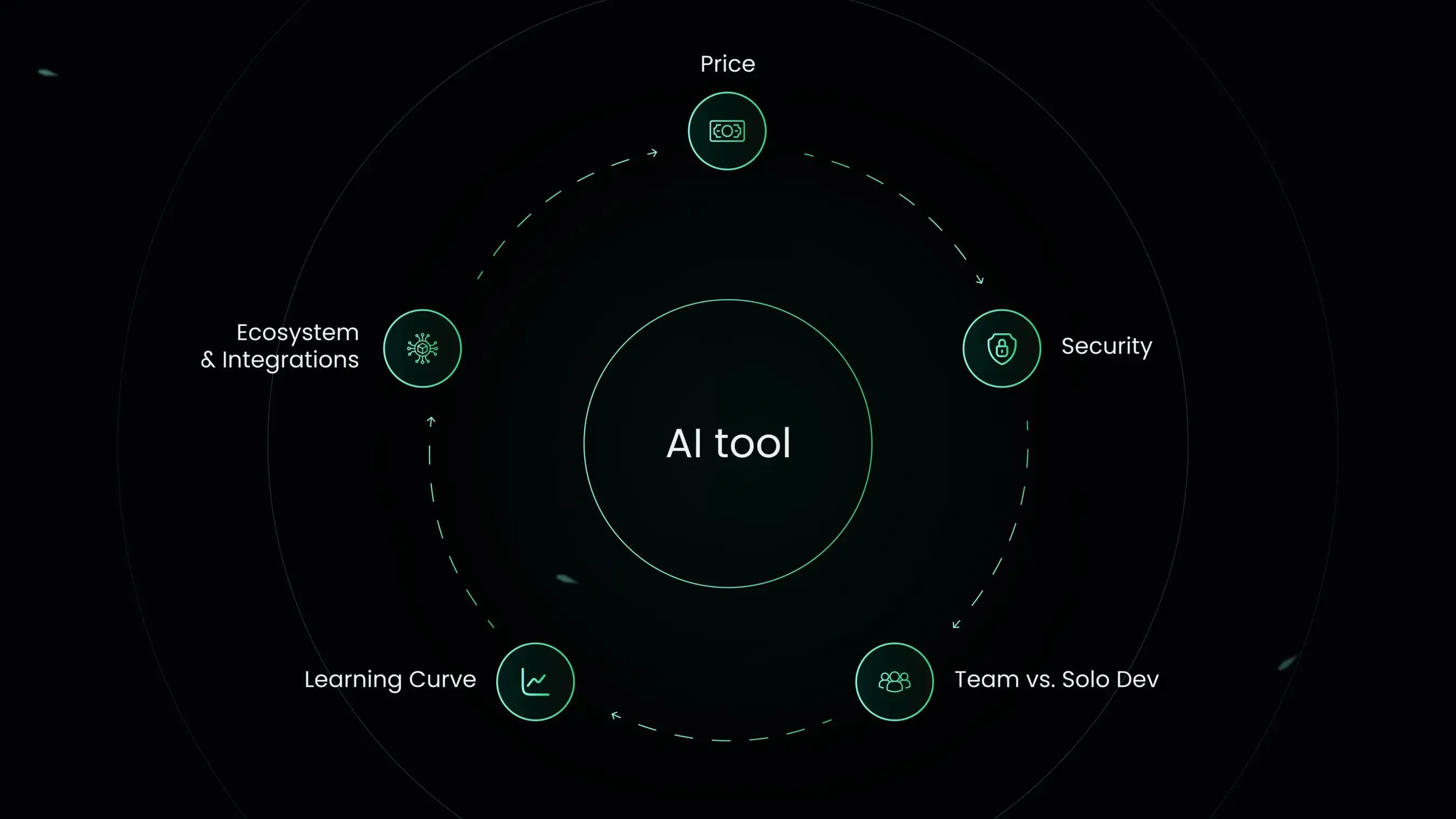
❧ What's Next for AI Coding Beyond 2025
❧ AI overtaking code writing
Remember the hype around Anthropic Sonnet 3.5 when it came out? Feels like ancient history now, right? 🦖
Crazy part: it was only a year ago. 😅
Fast‑forward, and we’ve already had two major updates. Sonnet 4.0? Practically getting pushed out of the race. New models drop like spiders in Australia: bigger, faster, scarier.
Each release gets better at code. If you’ve ever used Sonnet 4.0, no way you’d go back to 3.5 even if they paid you. The gap is just that big. ⚡
Right now, models already handle most of the coding for everyday devs: functions, components, tests. What happens in another 2/3 years? Kind of scary to imagine. 👀
The real question isn’t if this takeover happens—it’s when. And that’s why this next section matters even more.
❧ Developer skills shift
Here’s the twist: as AI takes over the raw coding, your role is changing. Less time hammering out functions, more time shaping the bigger picture. 🖼️
Think about designing systems, planning infrastructure, and building workflows instead of fixing semicolons.
And let’s be real—prompt engineering is becoming its own craft. You’ll spend time talking to AI enough to get what you want. Then you’ll put on your reviewer hat to double‑check its output. 👀
So stop picturing yourself as the late‑night keyboard warrior. Start seeing yourself as the architect, blueprint in hand, telling the machines what to build. 🏗️

❧ Productivity boost (if done right)
This shift—from coder to architect—might feel rough at first. But if you embrace it, the benefits are massive. ⚡ With the right context and prompting, AI Agents can crank out components and functions faster than a room full of interns hopped up on energy drinks.
And let’s kill the myth: this doesn’t mean you slack off watching TikToks at your desk. 📱 What it really means is having more headspace to think about the code itself and, more importantly, the whole infrastructure around it.
Used right, AI frees you to focus on architecture, reviews, and long-term design choices. That leads to cleaner, higher-quality software—not just more lines per hour. 🖼️
The flip side? If you don’t set it up right, you’ll spend your days cleaning up AI messes. So yes, the boost is real, but only if you stay in the driver’s seat.
❧ Unified workflows
As AI writes more and more code, the tools around it are leveling up, too. They’re turning into Swiss Army knives way faster than we can keep up. 🗡️
Take IDEs: a year ago, they just let you chat with an assistant. Now? They run full agents, spin up cloud tasks, and even review your pull requests while you sleep. 💤
Cursor is a perfect example. Just a few months ago, it was a single AI chat window. Now it’s a full system with Agentic Chat, CLI tools, background (cloud) agents, and BugBot for PR reviews.
And it’s not only Cursor. Codex went from being "OpenAI's copy of Claude Code" to showing up everywhere: IDE, CLI, PR reviews, cloud. The direction is clear: more unification and a whole lot less tool‑swapping for you. ⚡
❧ No‑code builders level up
And for the final part: while AI coding agents are busy stealing the grunt work, no‑code tools are sneaking up too. Platforms like v0 and Bolt keep leveling up month after month. 🚀
Will they replace custom builds tomorrow? Not quite. But the gap is shrinking fast. You’ll see higher quality, more polish, and way more real projects launched on them—beyond just side hustles and weekend hacks.
Startups, agencies, and even big enterprises are dipping in. Why? Spinning up something quickly that looks and works well is no longer a joke. It’s a smart ROI choice for companies, too.
Who knows? In a few years, these no-code tools might be powering not just your cousin’s side project but also a $100,000 client app. 🐶💇♂️

